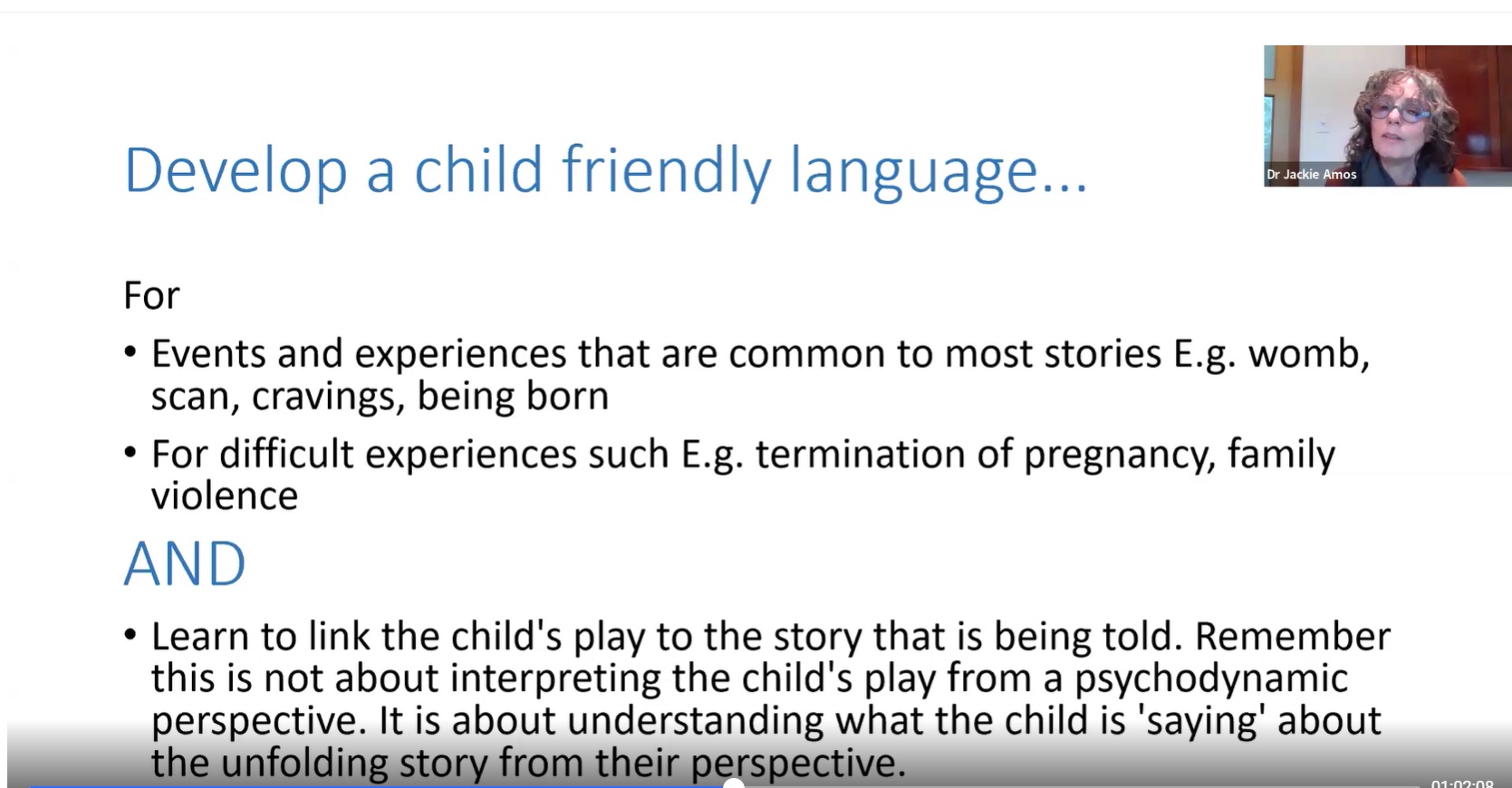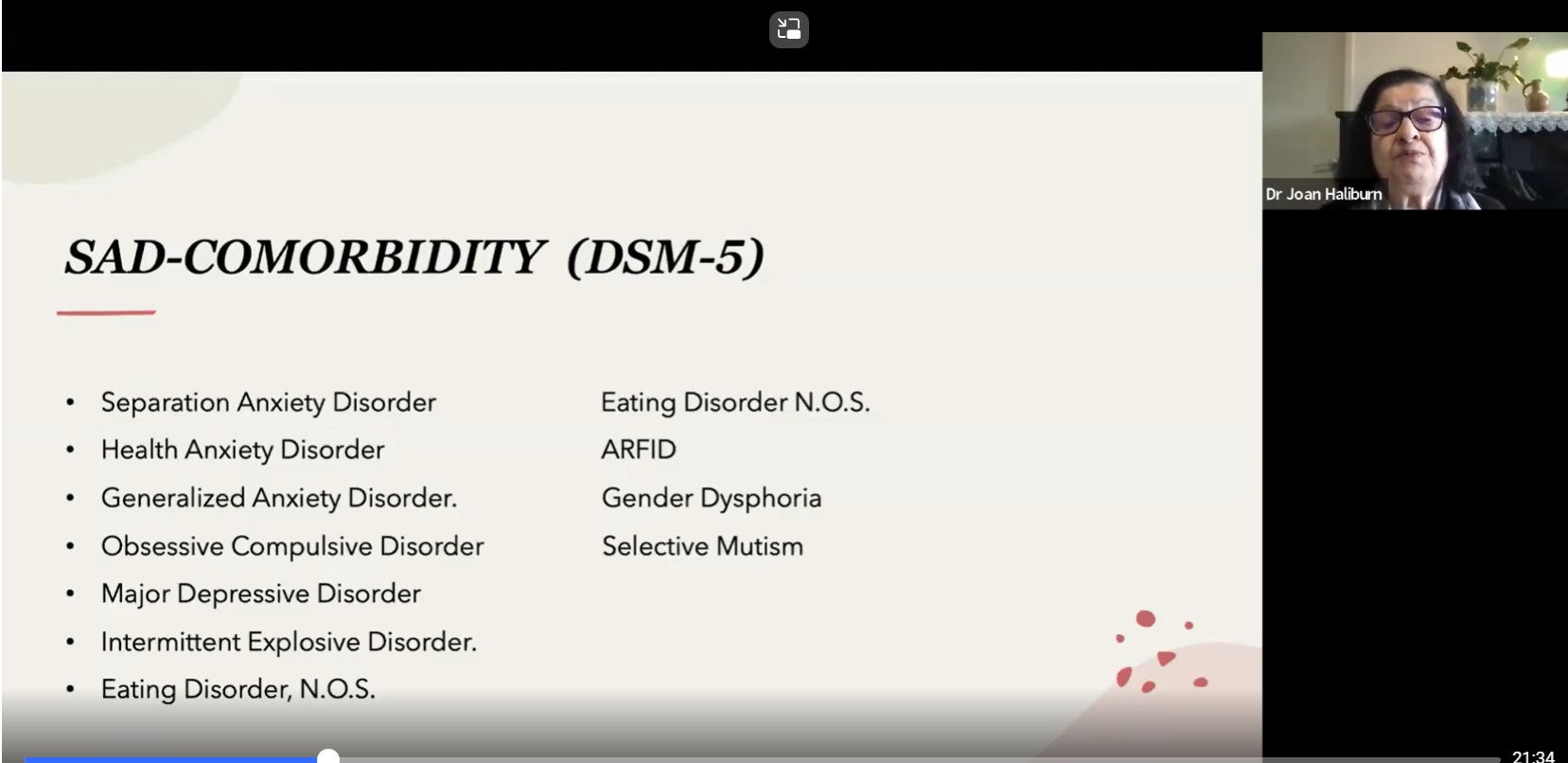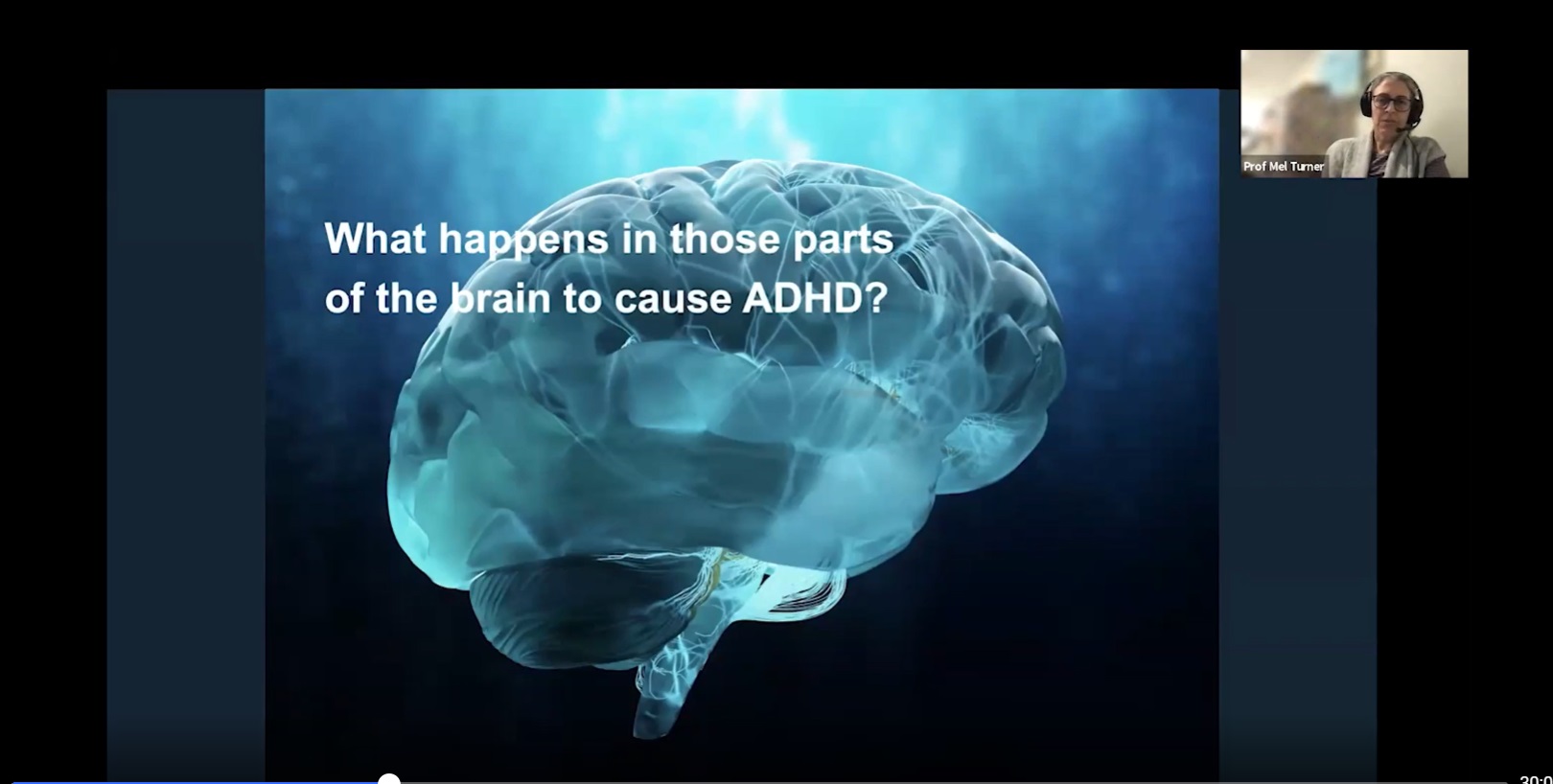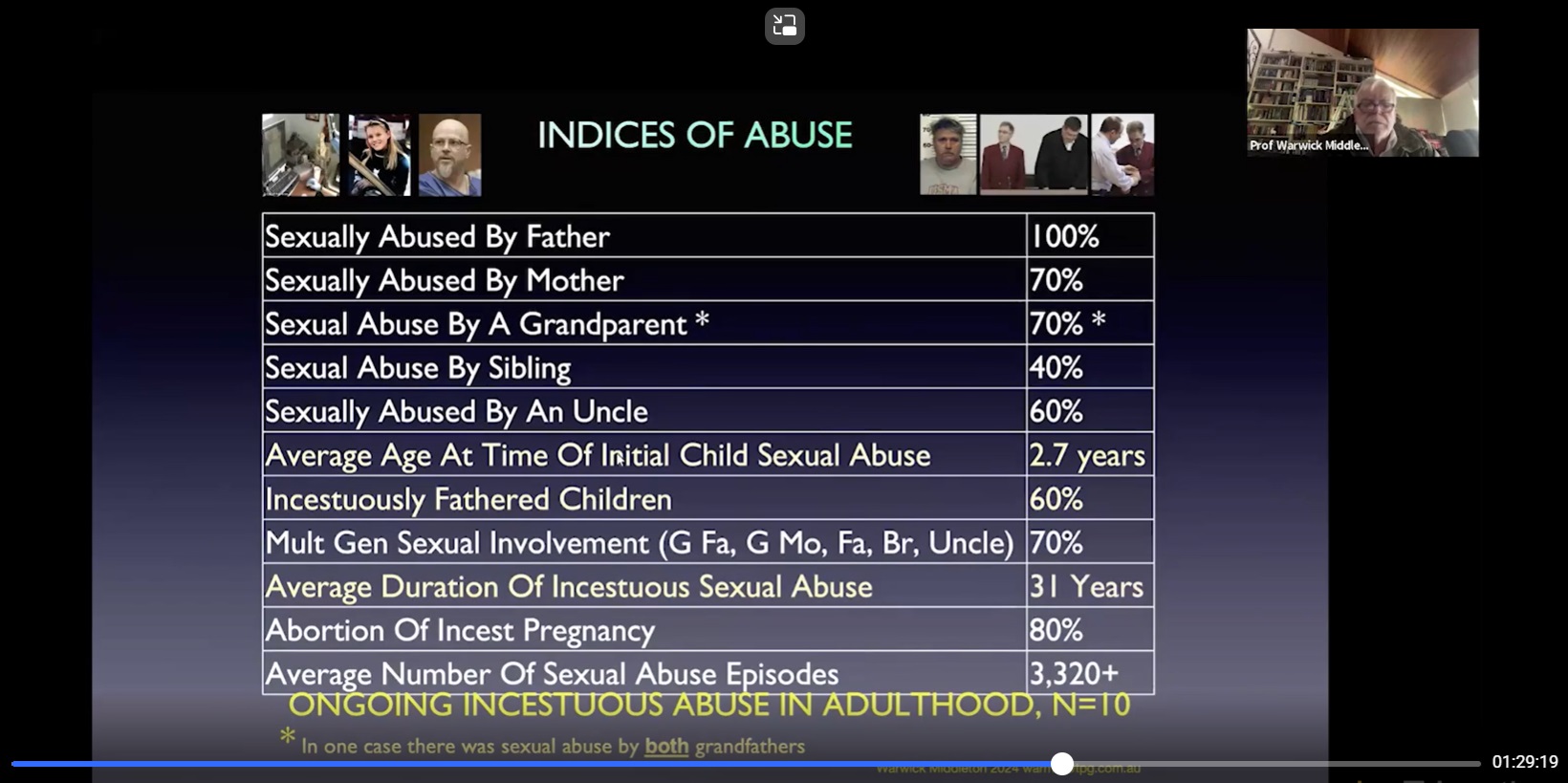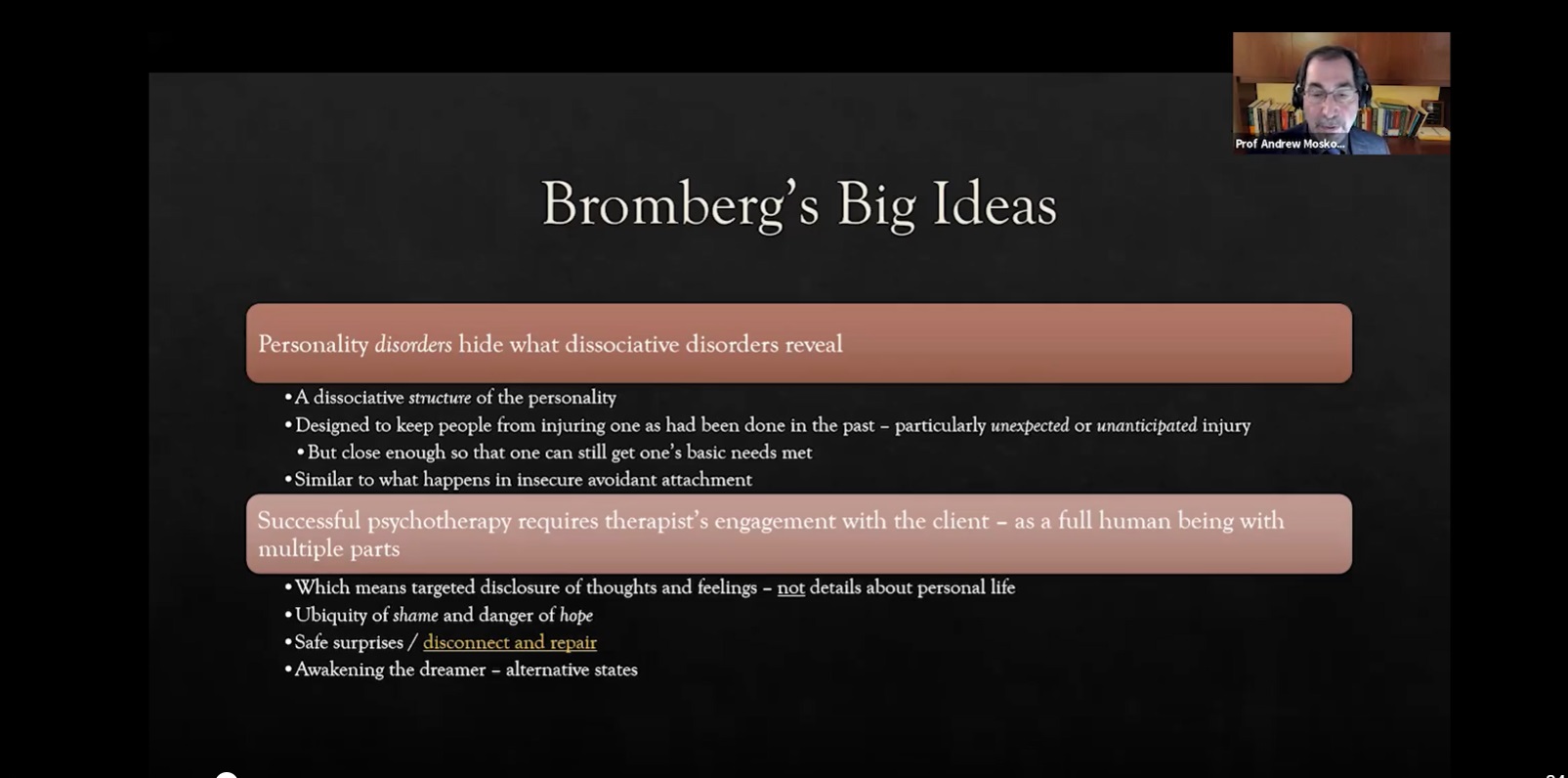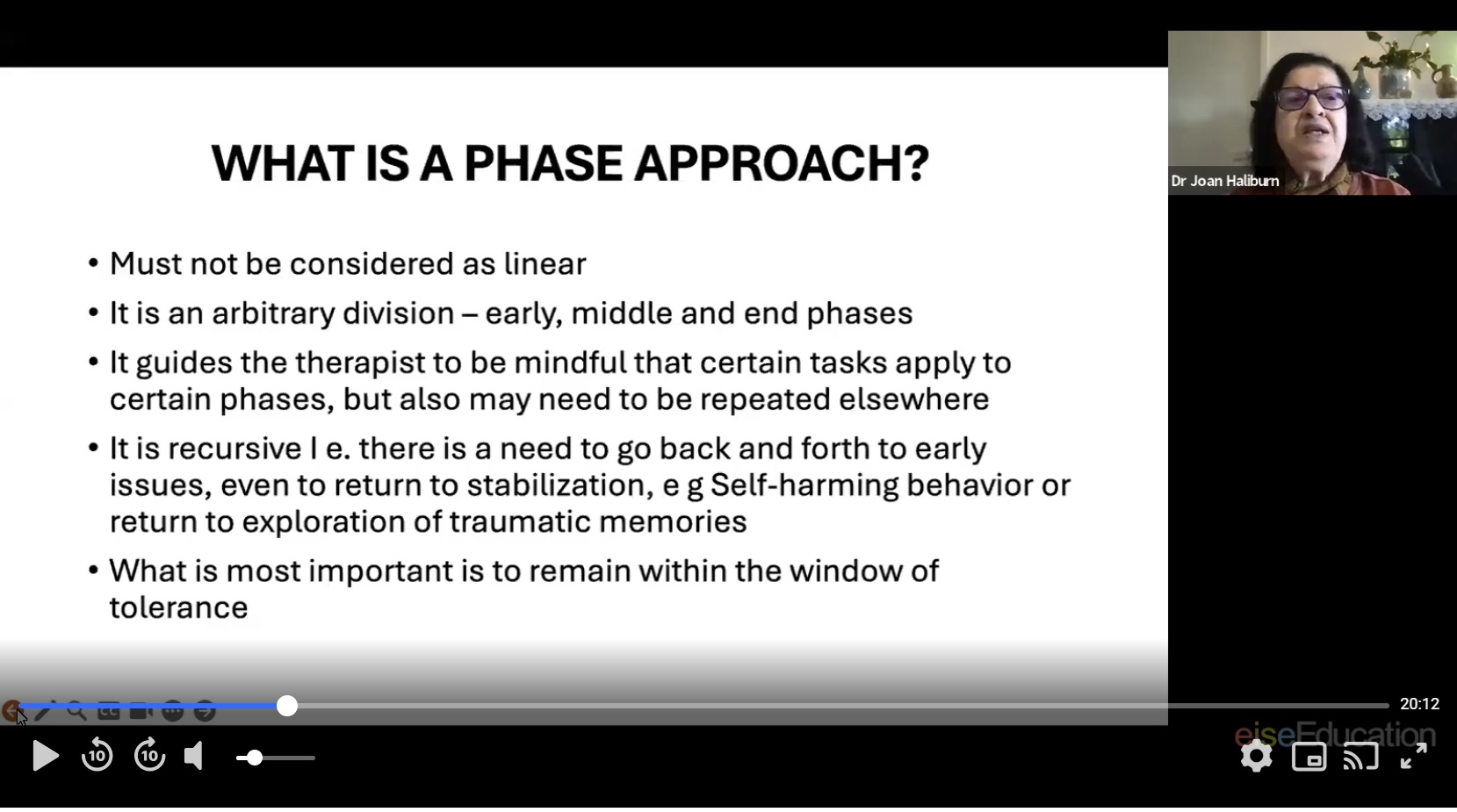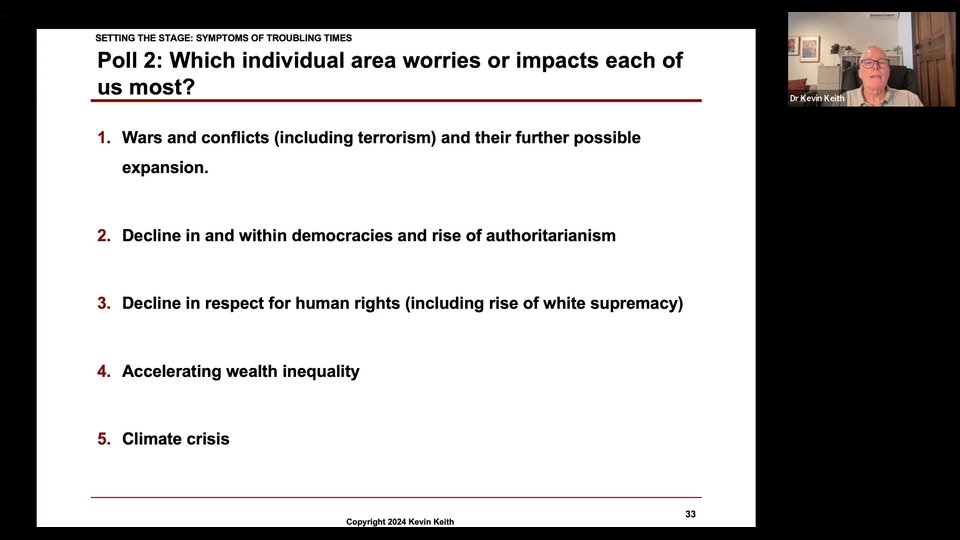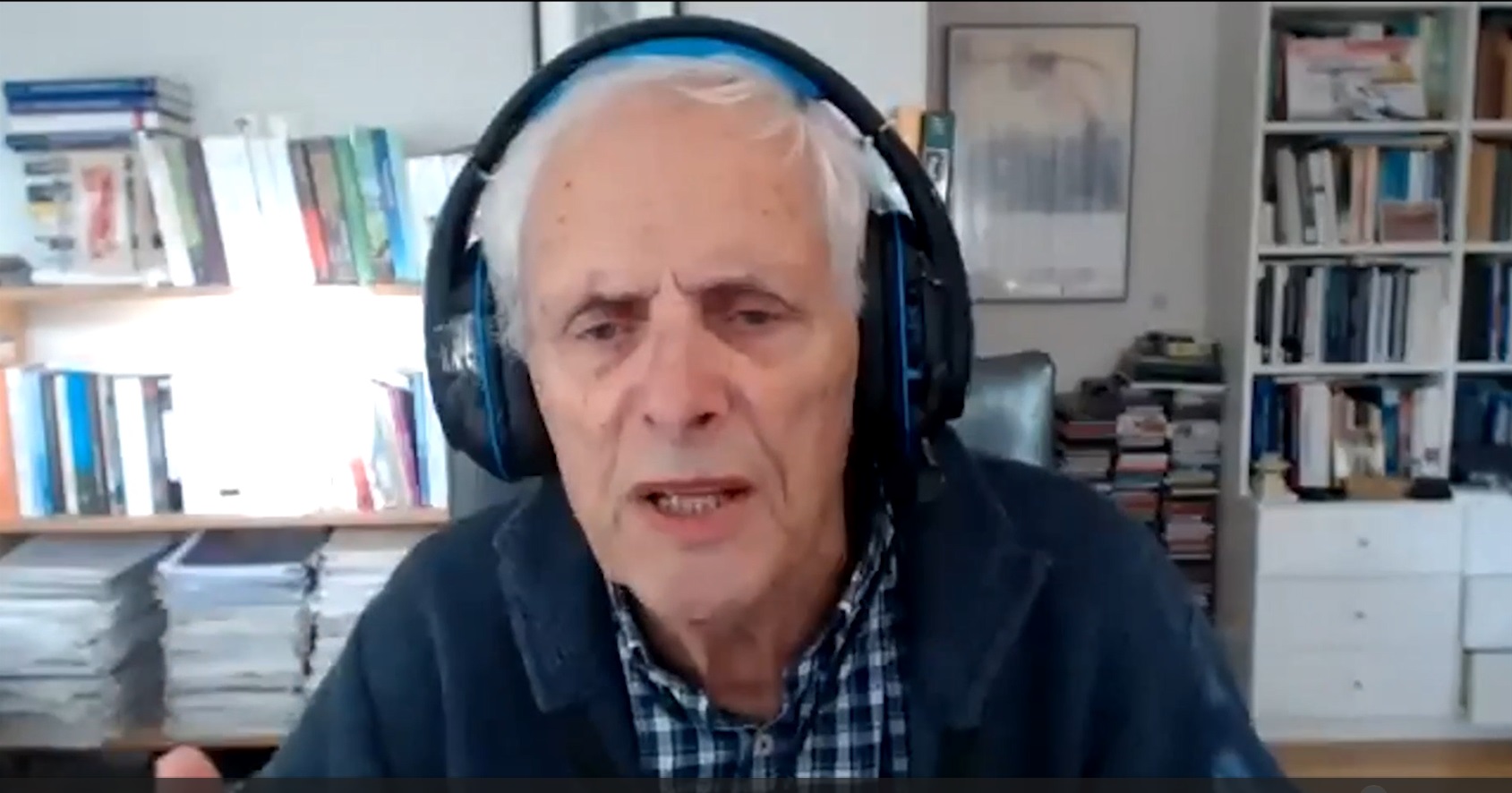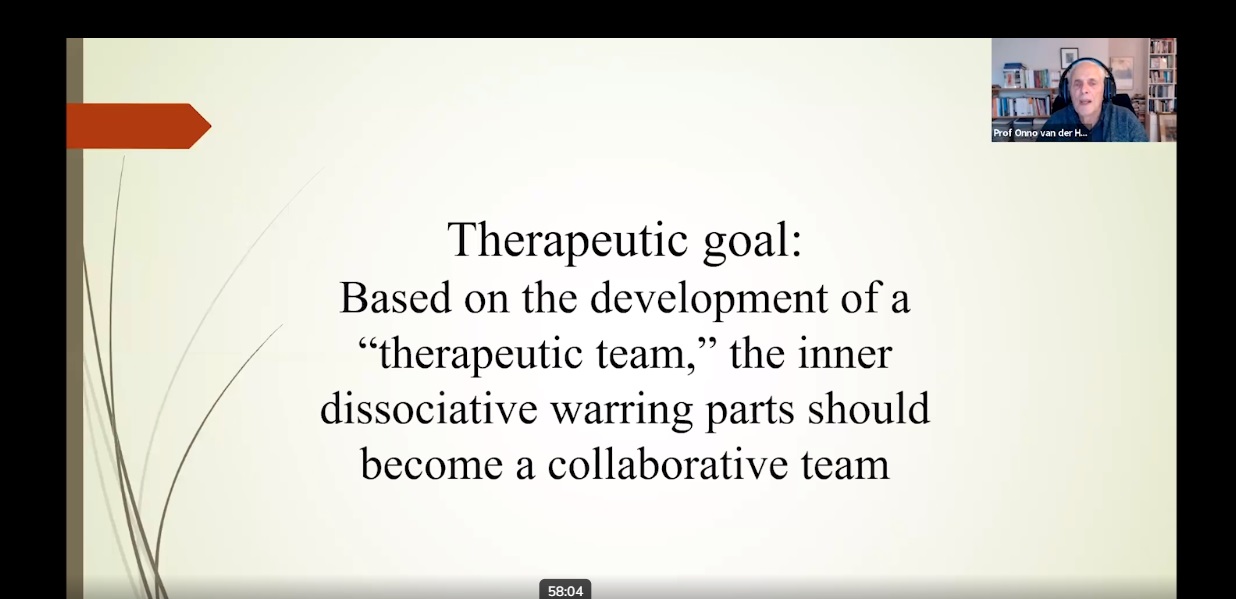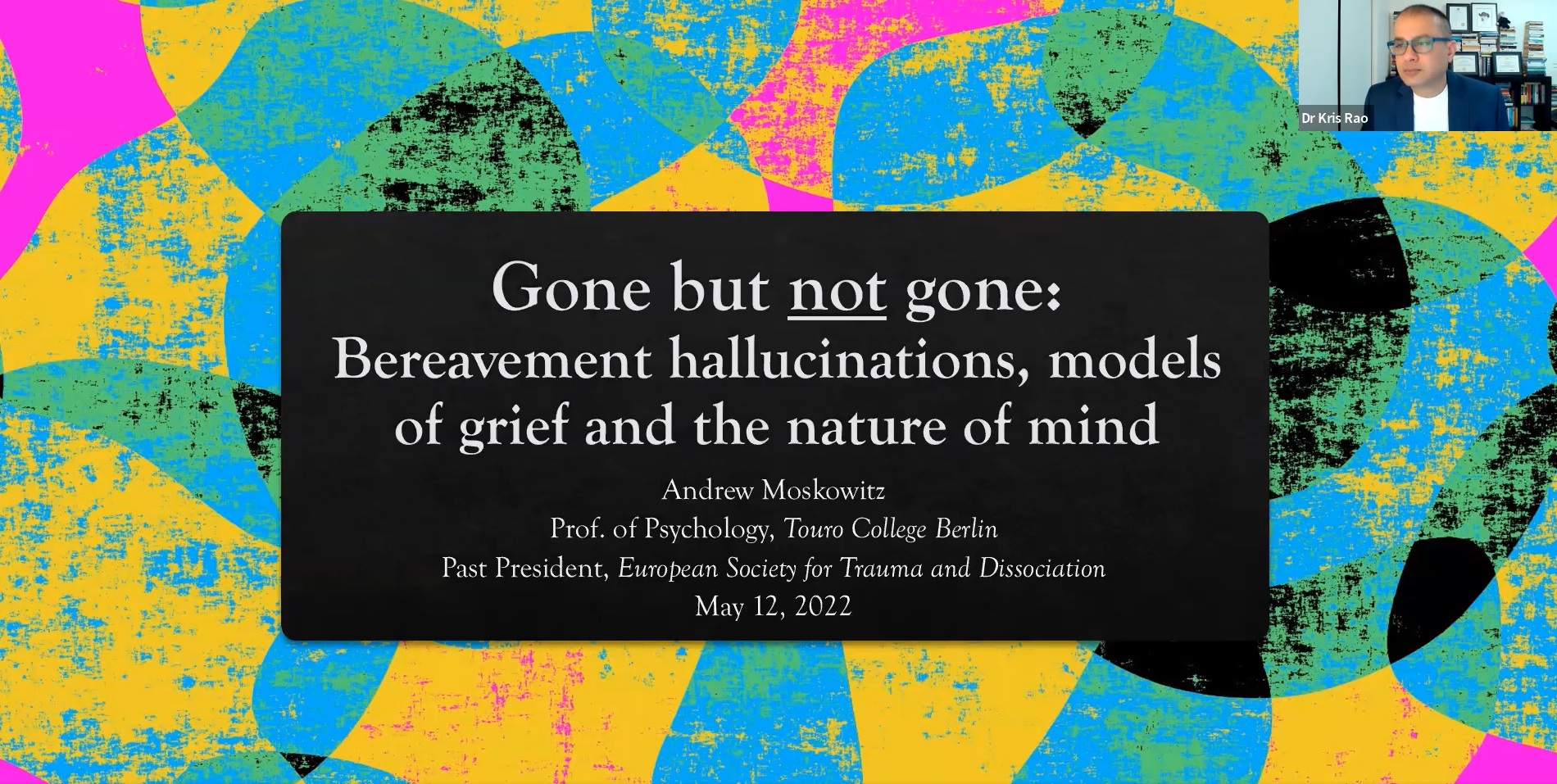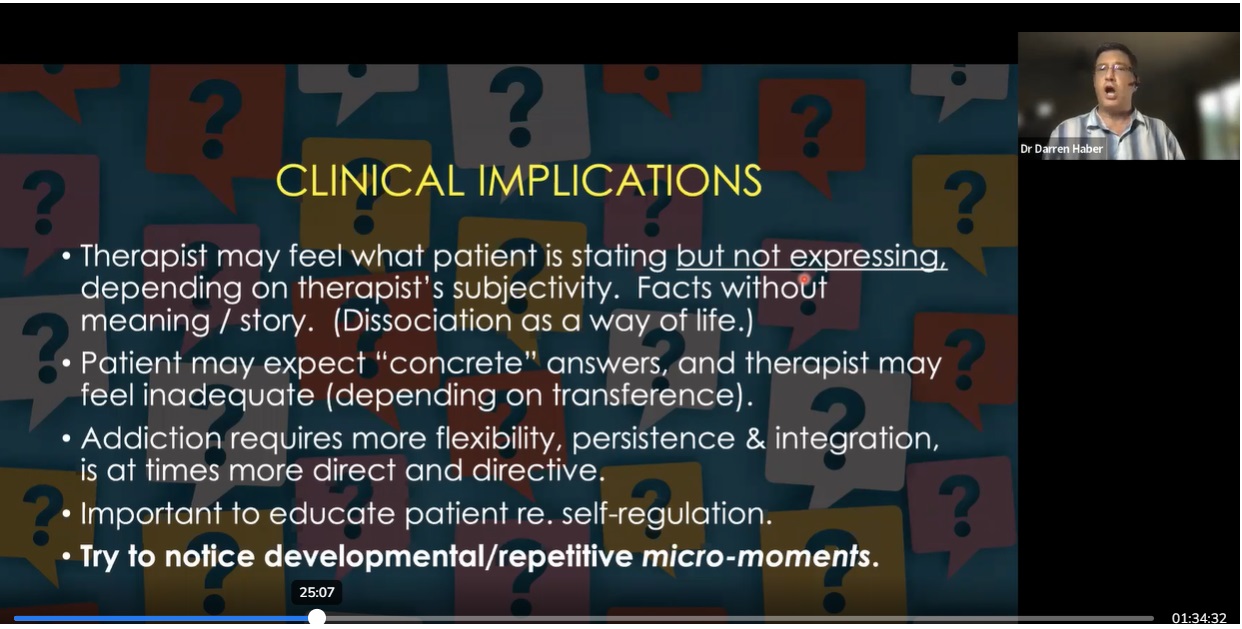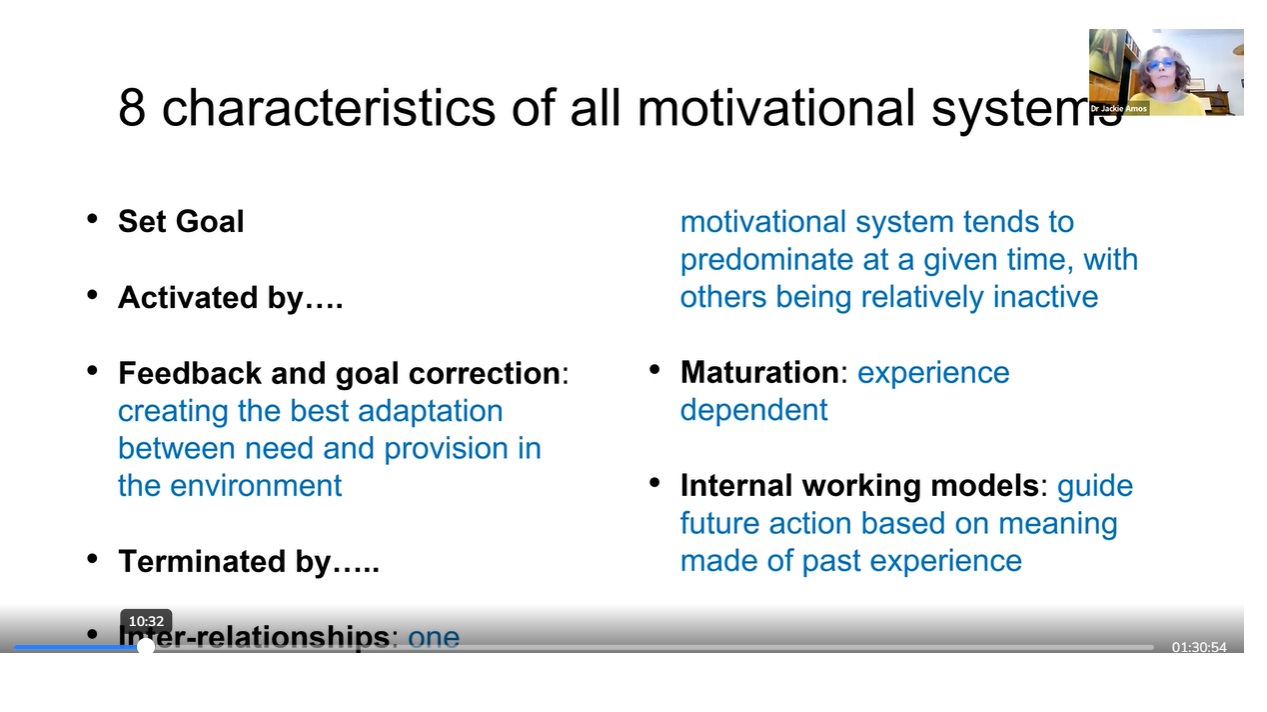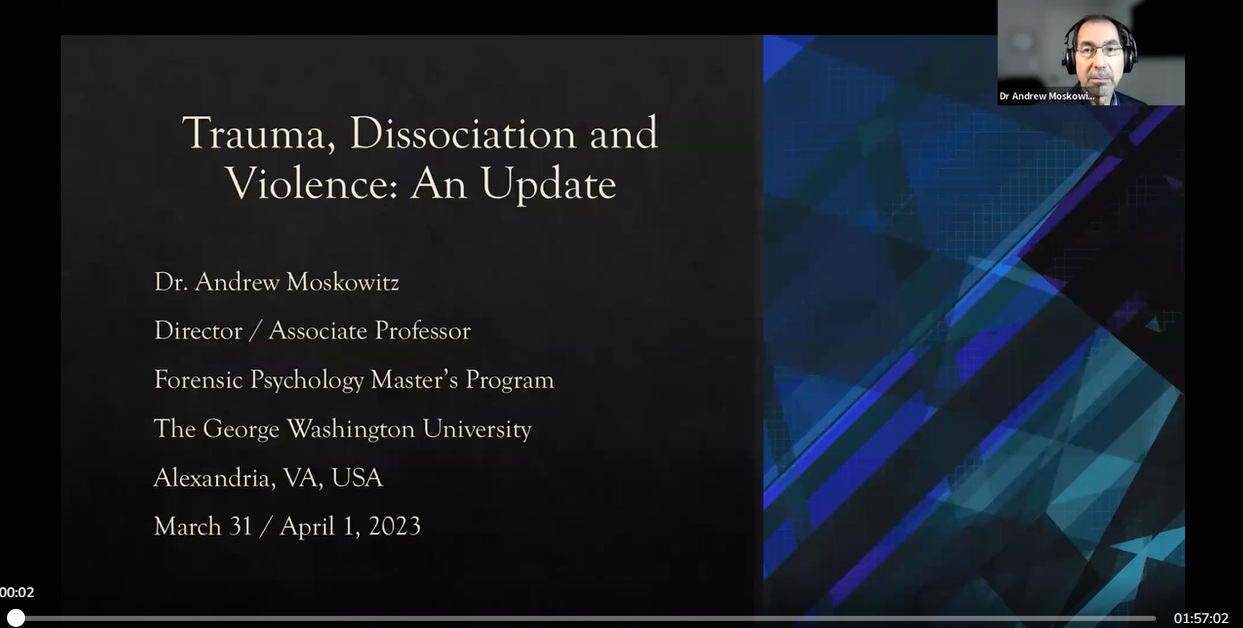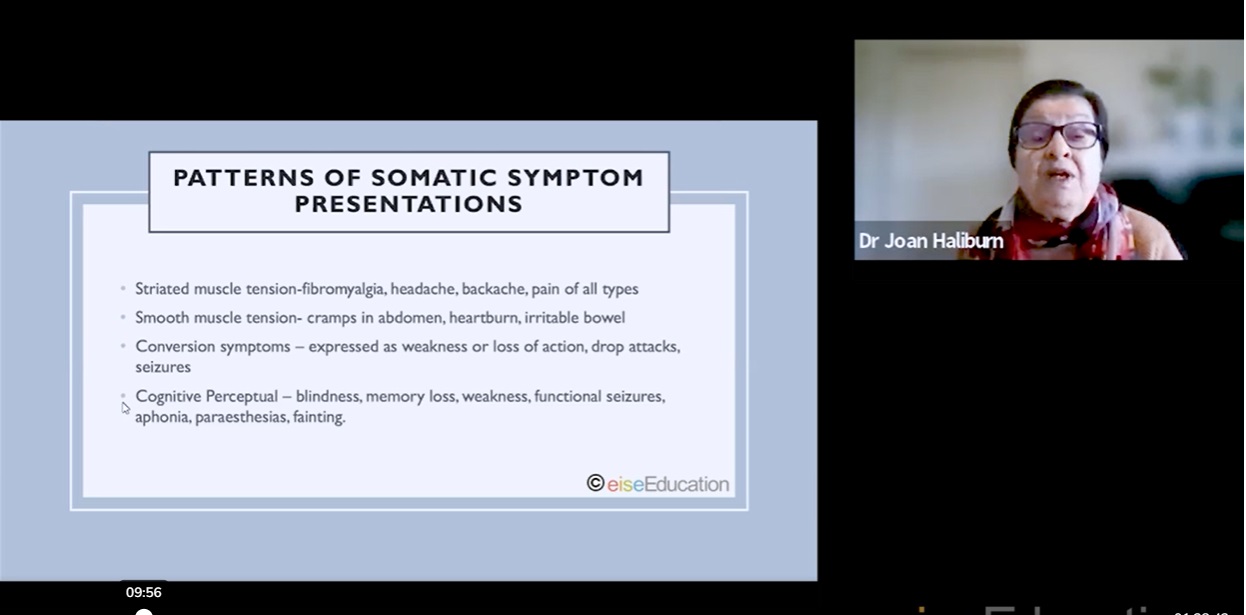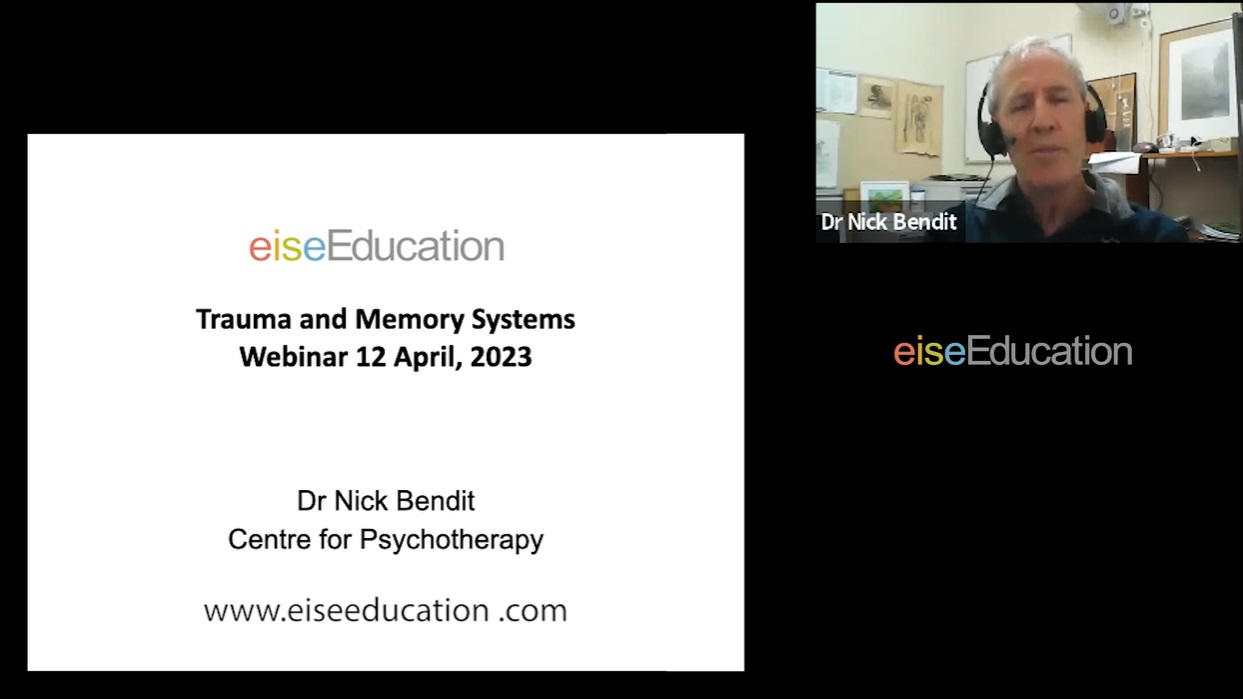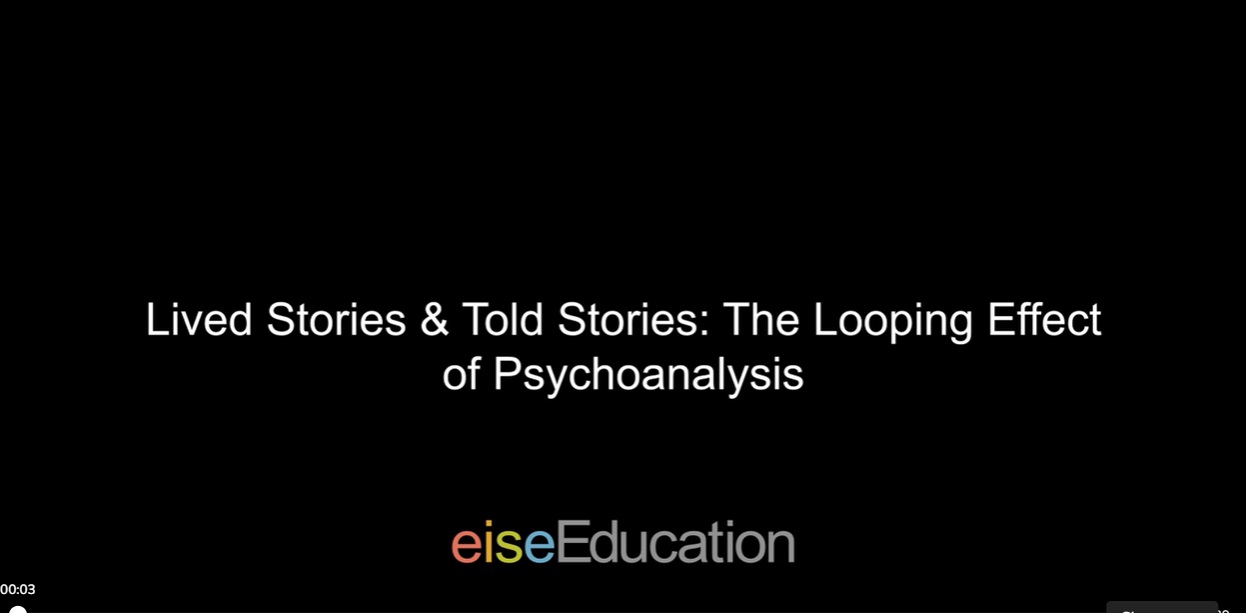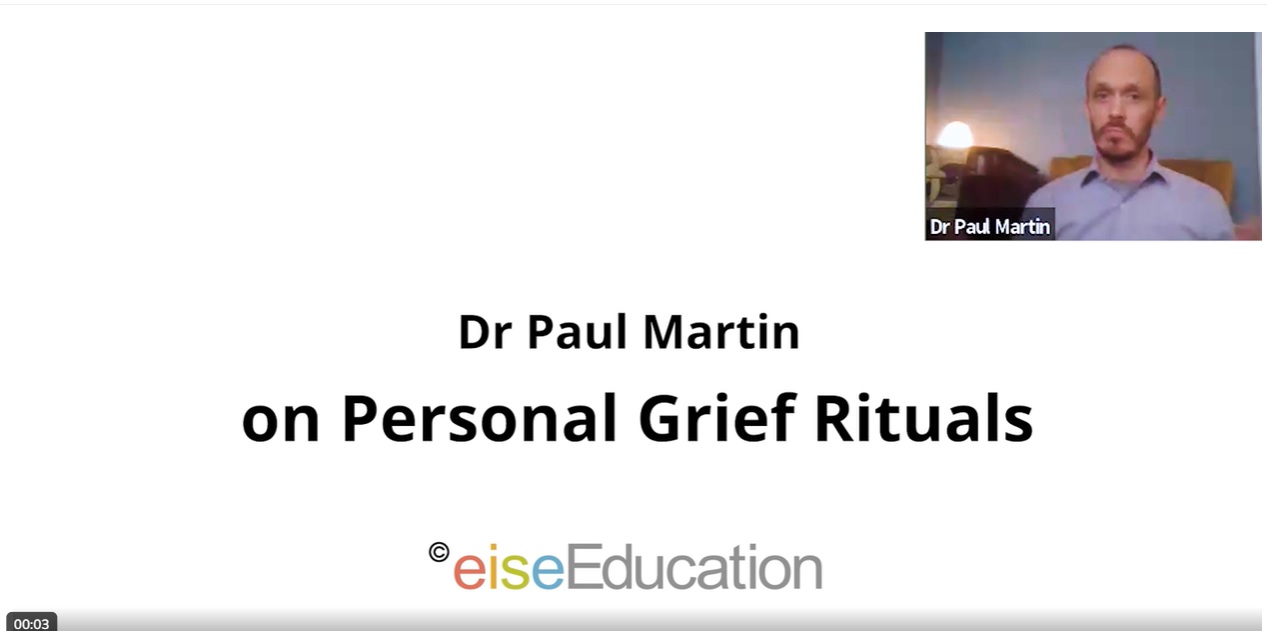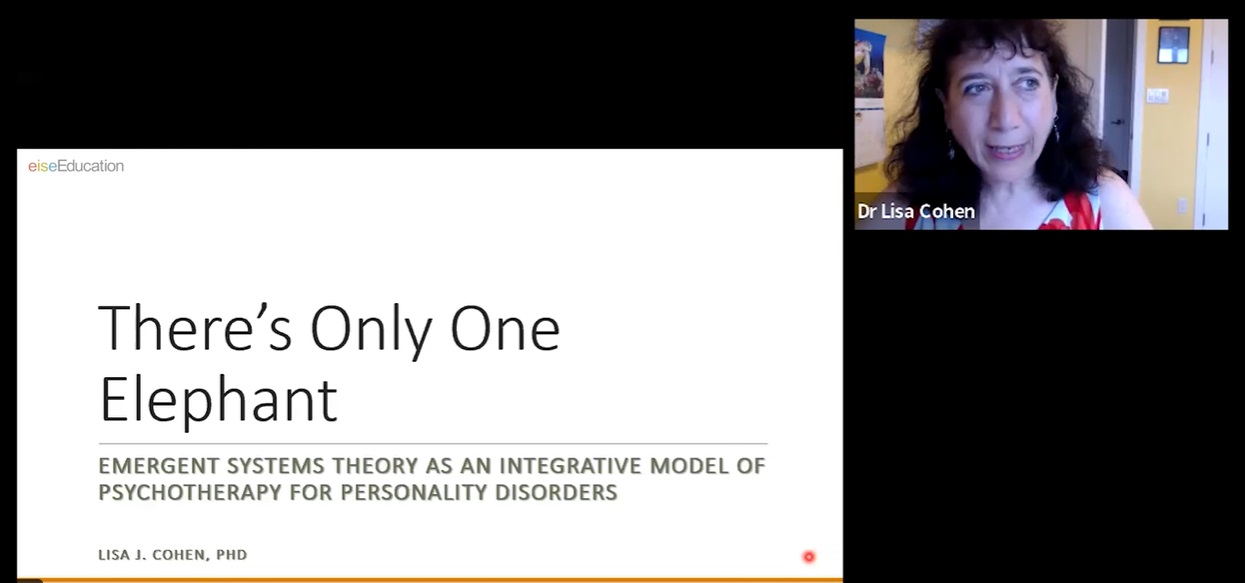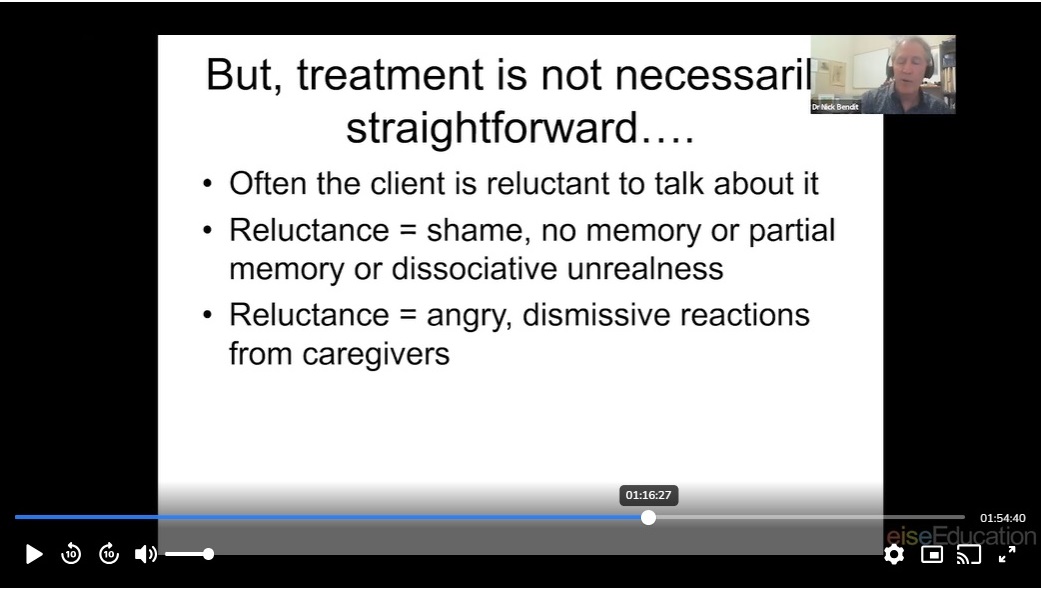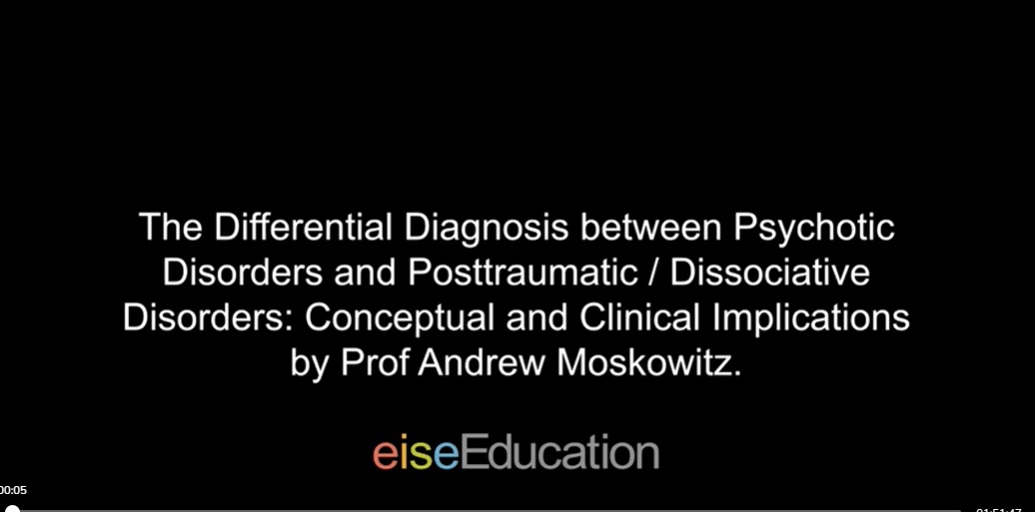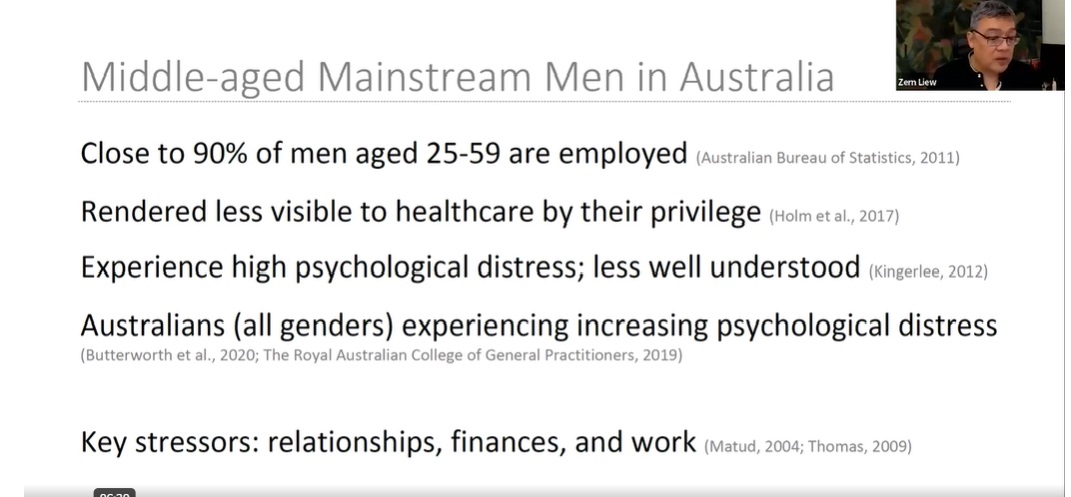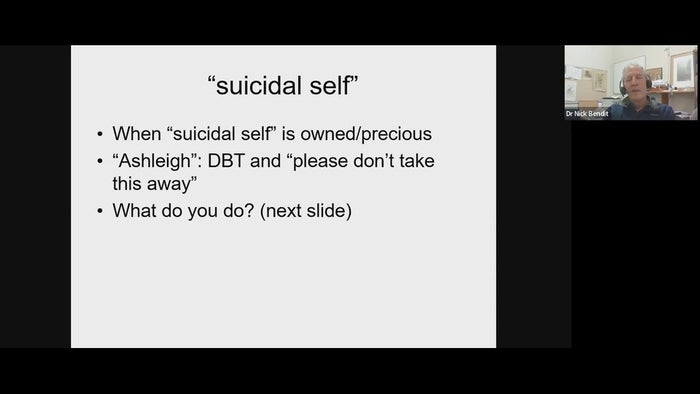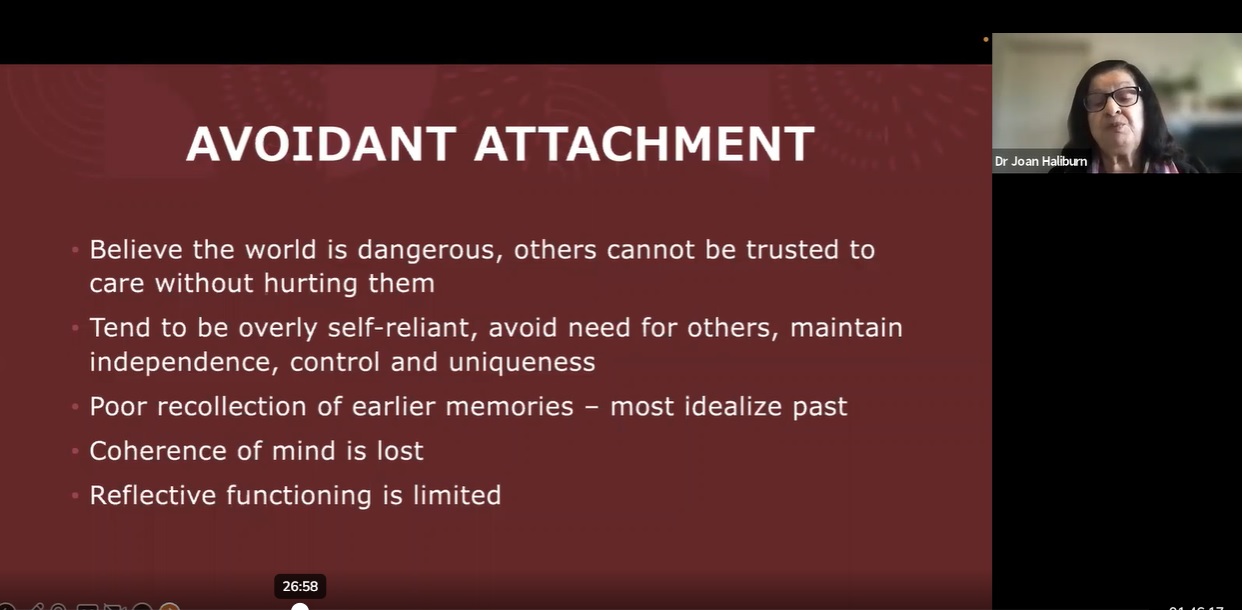On-demand Webinars
Our library of exciting and industry-relevant on-demand webinars are delivered by expert presenters and contribute to your CPD requirements. Access current, relevant, and focused content anytime and anywhere.
eiseEducation on-demand webinars are hosted on uscreen.io
Dr Jackie Amos on Parallel Parent and Child Narrative (PPCN)
Dr Jackie Amos
PPCN has been central to Jackie’s Child and Adolescent Psychiatric practice for 20 years. She has successfully used, and trained others in PPCN at Child and Adolescent Mental Health Services in Southern Adelaide. Jackie has more recently supported the inclusion of PPCN into the suite of interventions offered in a family reunification service in Centacare Catholic Family Services. Heather and her colleagues enjoy success working with families in Child and Adolescent Mental health Services and private practice across New Zealand
In this webinar, speaking as highly-experienced PPCN practitioner and trainer (and mother-child relationship researcher), Dr Jackie Amos will discuss the importance of dyadic therapies for parents and their school age children, explain the role of the PPCN therapist, outline the PPCN process with reference to the postulated mechanism of action and talk about how PPCN has been used effectively in Child and Adolescent Mental Health Service, and in a Family Reunification Service in South Australia.
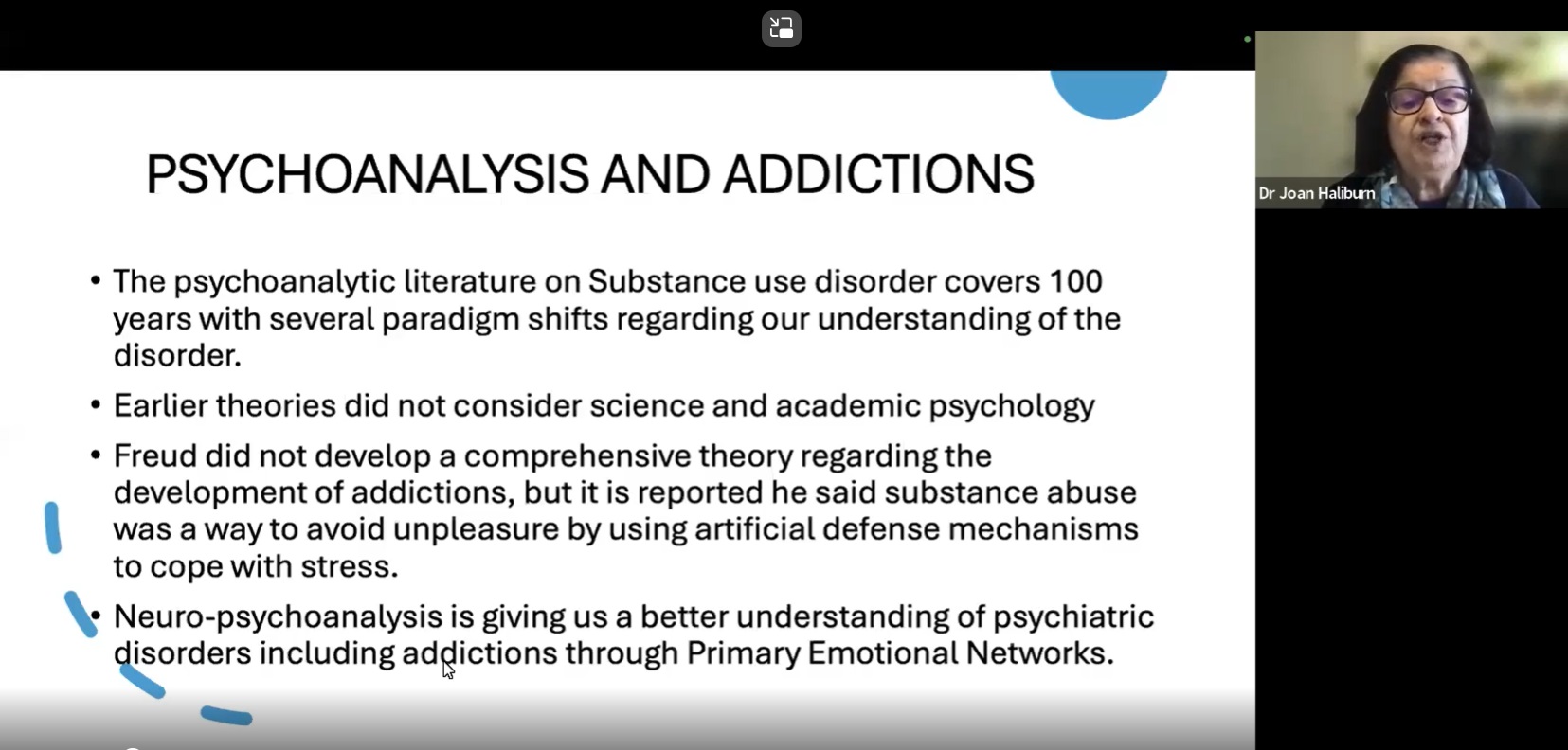
Attachment, Trauma and Personality in Addictions
Dr Joan Haliburn
The last decades have seen a substantial growth in studies on attachment and addictions. Similarly, the last decades have seen a substantial growth in studies on attachment and personality disorders. Despite, methodological problems, the link between insecure attachment and addictions today is well established. Attachment Theory describes different patterns based on different experiences in attachment relationships. Many of our patients are found incidentally to have addictions, others directly seek help for their addictions, and still others require specialized treatment centres. In all walks of life, and in all venues of work we encounter patients with substance abuse and addictions. Attachment Theory will provide us some avenues of understanding.Insecure attachments combined with early trauma provide the substrate for the development of personality disorders, and paths to difficulties in emotional regulation.
In this webinar, Dr Joan Haliburn will be discussing Attachment Strategies in more depth and the role of insecure attachments in substance use, polysubstance abuse, overeating, binge-eating and loss of control of eating as in aberrant patterns that characterize the binge-purge subtypes of anorexia nervosa-bulimia nervosa, and their compensatory behaviours.
Youth Interrupted – Social Anxiety Disorder during Adolescence: Co-morbidity & Sequalae – treatment principles.
Dr Joan Haliburn
Since the notable paper in 1985 by Liebowitz et al, the scholarly literature still invokes their phrase “the neglected anxiety disorder”, when speaking of social anxiety (and social phobia). That is because the condition is still comparatively under-recognized and undertreated, with limited ongoing clinical research. Irrespective of which theoretical/clinical development lens is used, adolescence encompasses approximately a crucial decade of a person’s psychology that can be compromised, and even interrupted, if Social Anxiety is not correctly diagnosed and treated early.
A combination of genetic, heritable, temperament, and attachment-specific interactions play a part in the aetiology of the condition. The emotional, social, academic, and behavioural impact of non-treated Social Anxiety Disorder typically results in depression, withdrawal, suicidal ideation, self-harm, eating disorders and related sequelae. Consequently, careful assessment, competent diagnosis, and specific/targeted therapeutic strategies are required when working with adolescents struggling with Social Anxiety Disorder.
In this webinar on Social Anxiety Disorder, Dr Joan Haliburn will discuss the prevalence, aetiology, assessment, diagnostic criteria, and developmental impact of the condition. She will then delve deeply (using vignettes and case studies), into the importance of early intervention and key psychotherapy treatment principles.
Prof Melanie Turner on ADHD in Adults and Adolescents.
Prof Melanie Turner
Attention-deficit/hyperactivity disorder (ADHD) is one of the most common neurodevelopmental conditions compromising childhood development. Although it has been conceptualized as a disorder of childhood for about fifty years, up to 90% of children with ADHD continue to experience some symptoms into adolescence and adulthood. In this webinar, Prof Melanie Turner will cover key aspects of diagnosing and therapeutically working with children and adolescents exhibiting symptoms on the ADHD spectrum. Seen through a psychiatric lens, she will also explore the overlap with other causes of similarly presenting challenging behaviours and mood changes, and how to work with those overlaps.
Prof Turner will also discuss non-medication options for ADHD treatment, especially psychotherapy. In addition to her practice-based experience, she will bring a contemporary research lens to focus on the comparative effectiveness and efficacy of the various medication and non-medication approaches. She will also discuss the significance of working with families, and the importance of communication with schools and Allied Health to align on ADHD treatment approaches. Being a topic of broad interest, the webinar will allow ample time for Q&A.
Dr Valerie Sinason on Dying for Love: An attachment problem with some perpetrator introjects
Dr Valerie Sinason
In 1990 Dr Valerie Sinason had a paper published in the British Journal of Psychotherapy, “Passionate lethal attachments” concerned by the lack of progress of three children seen in three different settings, an EBD School (school for children with emotional and behavioural disturbance), a Day Unit for disturbed excluded children and an outpatient Clinic, Dr Sinason noted a particularly destructive constellation in both their inner and outer worlds when the child is left far more at the mercy of internal attachments which can be lethal. Where a child has a severe intellectual disability, it can be even harder to extricate themselves from a destructive relationship. Thirty three years later, after further understanding of the significance of disorganised and lethal attachment patterns, and more long-term work with adults with dissociative identity disorder, Dr Sinason developed the ideas into “Dying for Love; an attachment problem with some perpetrator introjects” (2017) which was published in the Journal of Trauma and Dissociation, Vol 18, (3).
In trying to understand the problem with the children Dr Sinason found profound answers in Dickens’ Oliver Twist. Nancy recognises her lethal attachment to the violent Bill Sykes as a consequence of her earlier attachment to Fagin. She knows it. I am drawn back to him, through every suffering and ill usage; and should be, I believe, if I knew that I was to die by his hand’. Rose knows that is madness but can do nothing to help. At another point she says to her would-be rescuers I am chained to my old life. I loathe and hate it now but I cannot leave it. I must have gone too far to turn back’. In this webinar, Dr Sinason will discuss the nature and impact of a disorganised attachment pattern that is in fact infanticidal (Kahr 2007) and the issues this poses for therapy.
Prof Warwick Middleton on Beyond Death: Incest that continues into adult life.
Prof Warwick Middleton
In some ways, ongoing incest during adulthood constitutes the last frontier in our awareness of extreme and enduring trauma. It has existed as something referred to occasionally in clinical anecdotes, and any form of systematic study of this form of trauma has come very late. That delay suggests an extension of society’s reluctance to accept the reality of the widespread nature of incest itself. Extreme incestuous abuse, though published in the popular press is often underreported. According to research (Middleton, 2013), one in eight adults with a diagnosis of dissociative identity disorder were in a situation where they were incestuously abused as adults. Because it is under-reported, practitioners may suddenly find themselves caught unaware when a client trusts them enough to disclose that abuse. Their disclosure will have clinical implications for such practitioners.
This webinar positions ongoing incest during adulthood within the spectrum of extreme trauma and highlights the reality that almost inevitably it also encompasses, some variant of organised abuse. Victims of ongoing incestuous abuse that extends into their adult years, inevitably satisfy diagnostic criteria for dissociative identity disorder (usually in its more extreme forms). In this webinar, Prof Warwick Middleton examines the phenomenology and abuse profiles of such victims, exploring how therapists can work with such challenging clinical cases.
Master Class Series: Trailblazers of dissociation and psychotherapy - Philip Bromberg: Relational Psychoanalysis and Pre-emptive Dissociation.
Prof Andrew Moskowitz
The American psychologist Philip Bromberg, more than any other contemporary thinker and clinician, built a bridge between dissociation and contemporary psychoanalytic thinking and theory. Through his writings and teachings, Bromberg emphasized the core relevance of dissociation to the interpersonal psychology of Harry Stack Sullivan and relational psychoanalysis. He quipped that Janet’s ghost had come home to haunt Freud – who had famously eschewed dissociation for repression. Bromberg argued forcefully for a central role for trauma and dissociation in normal personality, and for pre-emptive dissociation in personality disorders – which maintained interpersonal distance in order to prevent psychological pain. He also believed that effective therapy required the activation of parts of the therapist’s self that could engage with the client’s parts (essential for the enactments he viewed as necessary for therapeutic progress) all the while respecting the other (normal) dissociative parts that were in the background; in addition, Bromberg insisted on – in striking contrast to classical psychoanalysis – the necessity of periodic therapist disclosures in order for therapy to be effective. And in his use of dreams in therapy, as in many of his teachings, he echoed – without apparently realizing it – the writings of another major historical figure who locked horns with Freud – Carl Jung.
Masteclass Series: Process Supervision & Taped Supervision
Dr Nick Bendit & Dr Kris Rao
The significance of supervision in developing clinical expertise has been acknowledged since the inception of psychoanalysis. Freud hosted weekly evening meetings in his home, where he and other therapists discussed both theoretical and case-related topics, essentially conducting group supervision (Hess, 2008).
When practicing psychodynamic psychotherapy, supervision is essential. However, what happens during supervision is highly variable. In this Masterclass, Dr Nick Bendit & Dr Kris Rao will discuss ‘process supervision’, which is common to most psychodynamic models, as well as cover ‘audio tape supervision’, which is somewhat unique to supervising the Conversational Model (CM) practitioners. The webinar will emphasise managing both difficult clients and supervisees, along with other clinical challenges encountered in the supervisory relationship.
Dr Joan Haliburn on The Psychotherapy Process: Considerations of Phase Approach
Dr Joan Haliburn
There are hundreds of psychotherapy modalities practised all over the world. Consequently, which primary considerations comprise Psychotherapy, and how it works (versus how well it works) are often-asked questions. In this webinar, Dr Joan Haliburn will attempt to answer those two questions by discussing psychodynamic psychotherapy processes, as viewed through the Conversational Model lens (aka Psychodynamic Interpersonal Therapy). Given that patients/clients come to psychotherapy with a wide range of problems and an even wider range of unique life histories and experiences, ideally psychotherapists need to tailor their therapy approach to their patient’s needs. Notwithstanding such tailoring, there are some presentations that are amenable to commonality in approach. For example, trauma is prevalent in many life histories, therefore during the assessment we heed the client’s frailty, their readiness to form a therapeutic relationship, and their capacity to “work through” defences, plus their propensity to change. These (and other) factors influence how we adapt a general therapy to the client, for no two therapies are alike.
Dividing psychotherapy into notional phases is a process-oriented way of demarcating key therapeutic tasks that both client and therapist hold in awareness. Therefore, division into an Early Phase including Assessment; A Middle Phase aka “Working Through”; and a Late Phase aka Integration, generally leads to positive outcomes. Dr Haliburn will describe how the Conversational Model (PIT) optimises each of these three phases, some typical interventions utilised in the Conversational Model, and the reasons for those interventions. Topics included are the therapeutic relationship, transference and countertransference, disjunctions and repair, impasses and ways to move through them, fear of traumatic repetitions that inherently inhibit client change, therapy separations and endings/termination
Prof Melanie Turner on Demystifying Voluntary Assisted Dying (Free Webinar)
Prof Melanie Turner
Voluntary Assisted Dying (VAD) is now a pathway of health care available in all Australian States and in New Zealand. The laws are similar Australia-wide, but differ slightly in each State, applying to people who have an incurable, advanced and progressive disease, illness or medical condition, and are experiencing intolerable suffering from that. In this webinar, Prof Melanie Turner will disambiguate the facts and myths surrounding VAD, covering key aspects including a summary of each region’s legislation and key differences; how the VAD process works and how people access it; the diverse teams of health-care professionals who provide VAD; what families and clinicians say about being engaged in the VAD process; as well as areas which need further considerations. The psychiatry/psychology view of ethics, neutrality and possible values-clashes, as well as grief and loss are also covered.
Reversing the Developmental Sequence – the Psychotherapy of Depression
Dr Joan Haliburn
“To be seen as lacking in value, or of no value is shameful, and therein begins the internalization of shame” – Russell Meares(1998).
The concept of depression in earlier psychoanalytic writings pointed to its origins in narcissistic vulnerability, developmental trauma and conflicted anger which had no possibility of expression. Hostility directed inwards, childhood disappointment of healthy narcissistic strivings, loss of an important other who is ambivalently regarded, difficulties with self-esteem particularly when reliant on others for regulation of self-esteem, to traumatically un-empathic parenting resulting in chronic feelings of emptiness and depression; insecure and unstable parenting, rejecting and critical behaviour on the part of parents, leading to the developmental of internal working models of self as unlovable and inadequate and others as unresponsive and punitive, causing vulnerability to later adversity or loss, and seeing such loss as failure on one’s own part; chronic devaluation from caregivers, creating shame and depression.
In this webinar, Dr Joan Haliburn will discuss the psychodynamics and psychopathology of depression, the types of depression, role of shame and guilt, and describe an approach to psychotherapy and some of the difficulties one can encounter when treating depressed individuals.
Psychotherapy in Troubling Times (Free Webinar)
Dr Kevin Keith
We live in troubled times, perhaps very troubled times. This webinar focusses on recognition of the dark clouds that may blur our horizons. How might we feel when considering pressing global imperatives — avoiding climate disaster, reversing accelerating inequality, combatting terrorism, ridding our communities of historical racism, and halting this century’s general decline in democracy? Acute and chronic fear, pervasive uncertainty and near paralysis may represent unavoidable but also dangerous byproducts. Not surprisingly, conducting therapy in these troubled times may also require something extra from each of us. The presentation offers an opportunity to reflect and clarify what that extra might be for each of us.
The webinar also provides an application of three key writings from Erich Fromm to address this challenge: Escape from Freedom (1941); The Art of Loving (1956) & The Art of Listening (1994). Of particular interest are his noted reflections hatred and authoritarianism, as well as his clinical emphases on loving and listening. The latter are particularly valuable when seeking with our clients ‘to look safely and not compulsively look away’. How do we care for healthily love our selves? Practical options for self-care will be explored, including aesthetics, spirituality, meaning-making, titrating our engagement with the news.
Two client-therapist scenarios will be engaged: (1) identifying strategies for embracing fear and uncertainty, (2) managing clinical risk, where potentially divergent perspectives may exist.
Prof Onno Van Der Hart on Complex Dissociation: The Challenge Of Developing Collaborative Relationship Between Therapist & Patient
Prof Onno van der Hart
Chronic childhood abuse and neglect can be understood as severe attachment or betrayal trauma because it usually occurs in the intimate [trust-based] relationships of parents and/or other caretakers. Consequently, a child may develop so-called disorganized attachment (DA) and/or a complex trauma-related dissociative disorder. In adulthood, those conditions can compromise other intimate relationships, as well as challenge the therapeutic relationship. Dissociative disorders are understood as a division of the personality into distinct dissociated parts. Each part has its own first-person perspective, whereby DA can be understood as [those] different parts perceiving intimate relationships differently, i.e., either as [desperately] longed-for, or as [extremely] dangerous. Those perceptions may test the therapeutic relationship, evoking severe approach/avoidance conflicts among these parts.
Clinical experience has taught us, in such cases, it is better to strive for a collaborative therapeutic relationship—also as a model for fostering collaboration among dissociative parts. In this webinar, Prof Onno van der Hart will discuss the clinical challenges of working with Complex Dissociation, with parts integration as a major therapeutic goal.
Working with Borderline Personality Disorder
Dr Joan Haliburn
Borderline Personality Disorder is the most researched of all the personality disorders, the most prevalent, with rates of 10% in outpatient and up to 20% in in-patient settings. There are many models of psychotherapy designed to work effectively with Borderline Personality Disorder. However, they have more similarities rather than dissimilarities and in general traverse the same paths. To work effectively with Borderline Personality Disorder the therapist must be prepared to deal with rather difficult transference and countertransference situations, and the complexities of the psychodynamics situated therein.
In this webinar Dr Joan Haliburn will discuss that single mechanism theories are insufficient, that co-morbidity must be taken into account, and that the forming of the therapeutic relationship – the singular necessity – depends on an understanding of attachment not only in the formation of the therapeutic relationship with safety and security, but also its effects on how the patient relates with the therapist and what the therapist must do in the face of sometimes inexplicable reactions and interactions.
Understanding Dissociation and How to Work with It. (FREE WEBINAR)
Dr Nick Bendit
Dissociation is an area of mental health that few practitioners know much about. It is shrouded in mystery and controversy, but in the last 10 years there is an increasing literature of the science and clinical practice of dissociation. As a phenomenon of everyday mental health, it is much more common than we realise, and has an important impact on treatment outcomes for a range of psychiatric disorders.
This 90 minute webinar attempts to cover the following areas:
What dissociation is and what it looks like
Brief review of the cognitive science of dissociation, normal and pathological
Dissociation as adaptation in human evolution
Dissociation in PTSD
Dissociation in borderline personality disorder
Dissociation in dissociative identity disorder
Prof Onno van der Hart on The Use of Imagery in the Treatment of Complex Trauma-related Dissociation (Session One)
Prof Onno van der Hart
A survivor with a complex trauma-related dissociative disorder once remarked that therapists should realize that dissociative people have a great capacity for imagination, which often remains greatly under-utilized. However, imagination may also act as a liability, playing a major role in the maintenance of trauma-related dissociation of the personality, which consists of dissociative parts mainly functioning in daily life (Apparently Normal Parts of the Personality; ANPs) and parts stuck in trauma-time (Emotional Parts; EPs). EPs may intensely and involuntarily imagine, even hallucinate, that the traumas of the past occur again. Such experiences can be regarded as malignant hypnotic trance states, in which the involved part of the personality is caught, having no possibility to reflect on the experience. Indeed, hypnotic states are characterized by a narrowed field of consciousness, absorption, and (often but not always) suggestibility. In this webinar Prof Van der Hart will discuss the application of two types of hypnotic-like guided imagery work in which clients are assisted in voluntary and deliberately realize reaching mutually agreed positive treatment goals:
(1) Resolving specific problems or symptoms with concrete or metaphoric images. Regarding metaphoric approaches, language is full of metaphors, with so-called metaphoric kernel statements referring to something essential; e.g., the way a patient may experience a particular problem. Whether concrete or metaphoric, these pathogenic kernel statements will be taken as point of departure for guided imagery.
(2) systemic work for fostering safe communications and increased collaboration among dissociative parts, in particular with regard to the construction and utilization of protective imagery, imaginary inner meeting places, safe or calm places, confrontation with and titration of traumatic memories, fusion rituals among dissociative parts.
In this session (Session One), Prof Van der Hart will cover hypnotic language (narrowing of the field of consciousness, absorption, trance logic, taking suggestions literally) as related to symptom-oriented and problem solving approaches (pathogenic kernel statements, metaphoric kernel statements, protective imagery and imaginary medical procedures).
Prof Onno van der Hart on The Use of Imagery in the Treatment of Complex Trauma-related Dissociation (Session Two)
Prof Onno van der Hart
A survivor with a complex trauma-related dissociative disorder once remarked that therapists should realize that dissociative people have a great capacity for imagination, which often remains greatly under-utilized. However, imagination may also act as a liability, playing a major role in the maintenance of trauma-related dissociation of the personality, which consists of dissociative parts mainly functioning in daily life (Apparently Normal Parts of the Personality; ANPs) and parts stuck in trauma-time (Emotional Parts; EPs). EPs may intensely and involuntarily imagine, even hallucinate, that the traumas of the past occur again. Such experiences can be regarded as malignant hypnotic trance states, in which the involved part of the personality is caught, having no possibility to reflect on the experience. Indeed, hypnotic states are characterized by a narrowed field of consciousness, absorption, and (often but not always) suggestibility. In this webinar Prof Van der Hart will discuss the application of two types of hypnotic-like guided imagery work in which clients are assisted in voluntary and deliberately realize reaching mutually agreed positive treatment goals:
(1) Resolving specific problems or symptoms with concrete or metaphoric images. Regarding metaphoric approaches, language is full of metaphors, with so-called metaphoric kernel statements referring to something essential; e.g., the way a patient may experience a particular problem. Whether concrete or metaphoric, these pathogenic kernel statements will be taken as point of departure for guided imagery.
(2) systemic work for fostering safe communications and increased collaboration among dissociative parts, in particular with regard to the construction and utilization of protective imagery, imaginary inner meeting places, safe or calm places, confrontation with and titration of traumatic memories, fusion rituals among dissociative parts.
In this session (Session Two), Prof Van der Hart will cover systemic approaches in working with dissociative parts (inner meeting place, imagery for comfort and care, safe and calm places, containment of traumatic memory work, titration in traumatic memory work and fusion rituals with parts).
Gone but not gone: Models of grief, bereavement hallucinations & the nature of mind.
Prof Andrew Moskowitz
While hallucinations have long been considered a psychotic symptom, it has also been recognized that hallucinations occur in individuals who are sane, and in situations where they are not pathologized. One of these is grief, or bereavement. These experiences, termed bereavement hallucinations or simply ‘sensory experiences of the deceased’, occur in more than half of adults who lose their partner or spouse, and are often cherished, not feared. They appear to be more common in marriages or relationships rated as highly positive and are not necessarily associated with pathological grief. In this webinar, the prevalence and correlates of bereavement hallucinations are reviewed, and a range of models developed to understand them presented. Such models include attachment-related, trauma and dissociation-based, and continuing bonds theory. Interpreting the experiences as the deceased actually communicating with the living partner is also socially validated in many cultures. Finally, the experience of bereavement hallucinations raises questions as to the extent to which the human mind itself is relationally-structured, or dialogical in nature.
Prof Andrew Moskowitz on Childhood Experiences and Delusions: Trauma, Memory and the Double Bind
Prof Andrew Moskowitz
Delusions are the paradigmatic symptom of psychosis, the essence of irrationality. And yet, is there a way in which they could be understood? If we knew what a person experienced in their early childhood, could we possibly understand their delusional beliefs? This is the thesis put forward in this seminar. Beginning with a discussion of the flawed concept of delusions, we look at the nature of traumatic memories and empirical evidence that delusions can be linked to (adult) traumatic experiences. Pushing back to early childhood, we look at the complicated question of infantile amnesia and the psychological impact of disorganized attachment experiences. The concept of the double bind is also introduced, in a discussion of the psychological purposes that delusions may serve. As an illustration of these ideas, the case of Judge Daniel Schreber, whose father was a famous German pedagogue, is presented; his ‘memoirs’ of his psychosis were analyzed by Freud, Lacan and others to support their theories of mental illness. Others have recognized in Schreber’s delusions the symbolic expressions of experiences of childhood abuse. Finally, the therapeutic implications of these ideas are explored – can delusions be alleviated by accessing memories of the experiences on which they are based?
The Paralysis of Analysis: Addictions & Relational Therapy
Dr Darren Haber
Is psychodynamic addiction treatment an oxymoron? Does a patient’s active addiction undermine therapeutic process—if yes, how to proceed? Is it true that until a patient sobers up, “nothing can happen” in their therapy? What do we do, if addiction is not a specialty, when substance abuse unexpectedly rears its head as a treatment issue? Join addiction expert Darren Haber, PsyD, as he discusses the psychodynamic treatment of addictive processes and their impact on the intersubjective field. Haber, speaking from many years of experience as a former rehab counselor and addiction specialist, outlines different ways of thinking and working with entrenched compulsivity, as patients’ aversion of affectivity can provoke analysts’ feelings of inadequacy, frustration, or even abandonment. Two vignettes will be presented to illustrate cases where addictive processes foreclosed emotional intimacy or reflection, typical of rigidly concrete or strictly antidotal self-organizations. One vignette features a patient whose child was addicted, where the therapist was enlisted to help “get” the child to stop, the patient a chronic caregiver whose selfhood is chronically de-centered or collapsed. Our clinical creativity, including revisiting our notions of empathy, becomes necessary to get a foothold in facing headwinds of chaos, self-destruction, or the emptiness that comes with those enslaved in addictive systems, as we too may be tempted to “rescue” or save a patient barely treading water.
Zern Liew on Non-artistic Creativity in Therapy.
Zern Liew
Creativity is an innate human trait. For good and bad, it has enabled us to adapt the world to our needs and open up new frontiers beyond our planet and within our minds. Influential thinkers in therapy have referred to creativity. Carl Rogers said the manifestation of creativity is a sign of a well-functioning person. Irvin Yalom approached therapy as a spontaneous creative process. Gerard Egan, among many others, noted that therapy is both an art and a science. Creativity is not the exclusive domain of the creative arts therapies. It is a cognitive activity applicable to problem-solving, adaptivity, playfulness, and innovation. Many talk (ie non-art) therapists are probably already using creativity unconsciously in their work. We all can direct and leverage creativity in our work without having to become “artistic”. This webinar will introduce you to creative problem-solving, creative responding, and creative methods you can start to use in your talk therapy practice. (Note: this webinar is not about the creative arts therapies and does not discuss art practices).
When wounds from infancy collide; the intergenerational transmission of maternal neglect and abuse.
Dr Jackie Amos
This webinar will present an attachment-based model of intergenerational maternal neglect and abuse of children. The model integrates two novel hypotheses with existing evolutionary research in the areas of attachment and interpersonal trauma. The first hypothesis is that ‘shame-without-solution’ is as important as ‘fright-without-solution’ in understanding traumatising attachment relationships in infancy. The second addresses the controlling adaptations to traumatising attachments in middle childhood and the corresponding hostile, helpless states of mind in adults with histories of chronic interpersonal traumatisation in important caregiving relationships. These adaptations are increasing recognised empirically as integral to the transmission pathway, and although attachment theory provides an evolutionary explanation of development during infancy few attempts have been made to extend an evolutionary understanding to these important observations in middle childhood and adulthood. Dr Amos will outline a second hypothesis that suggests as development proceeds, parents and children ‘utilise’ dominance and submission hierarchies conserved during evolution, to stabilise fear and shame without solution. The model has direct clinical utility and has been used to predict fundamental objectives of any effective treatment approach. These objectives provide a useful structure to guide intervention with families caught in distressing intergenerational cycles of relational trauma, neglect and abuse.
Prof Andrew Moskowitz on Trauma, Dissociation & Violence
Prof Andrew Moskowitz
Almost 20 years ago, psychologist Andrew Moskowitz published a pair of articles on the relationship between dissociation and violent crime (Moskowitz, 2004a, 2004b). At that time, the relevance of trauma to violence had been recognized (e.g., The Cycle of Violence, Widom, 1989), but the important corollary role of dissociation had hardly been noted. In these two articles – a broad review of the relationship between dissociation and violence and an analysis of the role of dissociation in different types of offenders – a range of important issues were considered, including: a) the prevalence of dissociation in violence, b) the frequency of amnesia after violent crime and its relation to dissociation, c) violence committed by individuals with dissociative disorders, d) dissociation as a mediator between childhood trauma and adulthood violence, e) peri-traumatic dissociation during violent episodes, and f) the role of dissociation in violent fantasies and Amok-style mass murders. Since 2004, these two seminal articles have been referenced hundreds of times in subsequent reviews and empirical investigations. The continued relevance and importance of the issues raised there will be discussed in the context of recent research and publications, along with implications for research, clinical work and forensic evaluation. In this webinar, Prof Andrew Moskowitz will provide a comprehensive overview of the links and overlaps between the trauma, dissociation and violence.
Dr Joan Haliburn on Trauma, Attachment & Somatization
Joan Haliburn
There is overwhelming evidence to show that early trauma disrupts the normal integrity of Self and that constant thwarting of the infant’s biological propensity to attach to a caregiver gives rise to a traumatic attachment – varying from insecure to disorganised. Somatisation has been described as an adaptive psychophysiological response to trauma where there is repeated threat of inescapable physical injury, the symptoms of which cannot be explained medically, or may accompany other psychiatric disorders such as severe depression and anxiety. Somatisation involves dissociation when cumulative experiences of chronic devaluation, emotional neglect, physical and/or sexual abuse compound its complexity. In this webinar, Dr Joan Haliburn will discuss the relationships between early trauma and somatisation. She will also provide a brief historical over-view, the changes in DSM-5 leading to its being renamed, Somatic Symptom Disorder, and in more depth, the principles of psychotherapy relating to a case of Somatization Disorder.
Trauma & Memory Systems
Dr Nick Bendit
Much of long-term therapy with clients with long-standing disorders (such as BPD, dissociative disorders, chronic depression, etc) involves the modification of emotionally traumatic experiences from early childhood. These disruptive and disorganising early experiences are held in early memory systems. These memory systems are not available for conscious reflection, yet organise our clients lives in chronically disastrous ways. This explains why short-term therapy, particularly therapy that relies on conscious remembering or psycho-education, simply don’t work for so many clients. This webinar will explain how most models of therapy need to be adapted to work with clients with early attachment trauma and will describe one particular psychodynamic model, the Conversational Model, that illustrates many of those principles.
Lived Stories and Told Stories: The Looping Effect of Psychoanalysis
Dr Daniel Goldin
Before YouTube and TikTok, before books and poetry, before writing, humans put their stories together in conversation in order to share experiences and make sense of them. In our prehistory, the story never became a concrete artifact capable of being reproduced in a precise way and disseminated. It lived only in talk. And our ancestors continually tweaked their stories to meet current circumstances, to understand more and better, whether those stories were mythic explanations handed down from the past or current stories about the goings-on in contemporary life. Therapists and patients put together stories in a similarly dynamic way, intensifying a process we have engaged in since humans began to herd together on this earth.
Dr Lynne Jacobs on Relational Aspects of Intersubjectivity Theory and Gestalt Therapy
Dr Lynne Jacobs
Intersubjectivity theory offers important clinical insights for Gestalt therapists who wish to refine their understanding of the contacting process and its function in self-development. The concepts of self-structure, self-experience, co-construction of reality and empathic attunement enrich Gestalt understanding of the psychic functions of contact, the experience of contact, and the multidimensionality of contact. Intersubjectivity Theory also posits a holistic view of human nature. The holism is reflected in the centrality of self structures and self-experience, which brings it close to Gestalt concept of organismic self-regulation. Importantly, Intersubjective theory also shares with Gestalt therapy an emphasis on emotion and emotional development as central to the development of self structures or the capacity for self-regulation. In this webinar, Dr Lynne Jacobs discusses the relational concepts and perspectives from Intersubjectivity theory which may be used to build Gestalt theory. Dr Jacobs will define and describe certain concepts from Intersubjectivity Theory, and critique them for their relevance and applicability to Gestalt therapy.
Dr Paul Martin on Personal Grief Rituals
Dr Paul Martin
Loss, grief and mourning are ubiquitous human experiences that pervade the work of therapists, psychiatrists, counselors, and social workers alike. Helping those who have experienced a significant loss can be challenging and confusing. In what ways can we tailor our interventions to accommodate the specific temperaments and psychological needs of our bereaved clients? Dr. Paul M Martin will explore research on the topics of complicated bereavement and attachment theory. He will then share his thoughts on the importance of taking attachment style into consideration when designing treatment plans for bereaved clients. Lastly, Dr. Martin will discuss how grief-focused therapy can be strengthened by working with clients to create personal grief rituals that are catered to their unique psychological needs and grounded in meaning about the specific relationship they are attempting to mourning.
What’s in a Name? Trauma, Complex Trauma, Posttraumatic Stress Disorder, Complex PTSD and Borderline Personality Disorder – The Differences
Dr Joan Haliburn
In this webinar Dr Joan Haliburn will attempt to clarify the differences between these terms often subsumed in the term Developmental Trauma Disorder. She will elaborate the aetiology, developmental lines and symptomatology presented and the importance of elucidating these in anyone who presents with a history of trauma. Dr Haliburn will also touch on the history of how BPD began to be seen as a pejorative label by some, with attempts to replace it with PTSD, only to be debated as being too simple when complex trauma was involved, changing this to Complex PTSD. This is a compromise diagnosis – it does our patients a dis-service depriving them of appropriate treatment, which she will discuss with case excerpts.
Dr Lisa Cohen Emergent Systems Theory as an Integrative Model of Psychotherapy for Personality Disorders.
Dr Lisa Cohen
There is today a veritable smorgasbord of psychotherapeutic treatments available, leaving the clinician at a loss to know how to select the appropriate treatment for each patient. In response, clinicians tend to either pick one model and stick to it religiously, like the Hindu parable of the blind men and the elephant, or develop a grab bag approach with no unifying explanatory framework to guide their choices. Emergent Systems Theory is an integrative model that addresses the issues of differential diagnosis and treatment selection from a neuro-evolutionary framework. The human psyche is conceptualized as a complex system, one which developed in layers across our evolutionary history and that even now carries the record of that history in its very structure. We will discuss five proposed layers of the mind/brain, each of which reflects a different point in human evolution, is characterized by distinct psychological processes, breaks down into distinct forms of psychopathology, and therefore requires specific therapeutic techniques. As such, these layers can offer a general map for differential diagnosis and treatment selection. In this webinar, from the vantage point of Emergent Systems Theory, Dr. Cohen will explore common types of clinical presentations and treatment approaches, with an emphasis on personality disorders.
Dr Nick Bendit on Understanding & Managing Deliberate Self Harm in Therapy
Dr Nick Bendit
In this webinar, Dr Nick Bendit will discuss the etiological factors associated with deliberate self-harm, as well as explain what drives and maintains those client patterns. He will also discuss assessment, severity of risk of deliberate self-harm, as well as the importance of managing countertransference responses in therapists. Dr Bendit will also clarify how to treat deliberate self-harm with psychotherapy.
The Differential Diagnosis between Psychotic Disorders and Posttraumatic / Dissociative Disorders: Conceptual and Clinical Implications
Prof Andrew Moskowitz
This webinar will present evidence and explanations for the presence of psychotic symptoms in posttraumatic (including ICD-11 Complex PTSD) and dissociative disorders (Moskowitz, Heinimaa & Van der Hart, 2019). While the presence of psychotic symptoms is not useful as a differential diagnostic tool, certain aspects of delusions and hallucinations may aid in differential diagnosis. Dissociative symptoms provide a more solid foundation on which to distinguish between psychotic, posttraumatic and dissociative disorders; the most relevant dissociative symptoms in this regard will be highlighted. These clues to differential diagnosis, and the conceptual and clinical implications of these differences, will be discussed and important unanswered questions raised.
Engaging Men in Therapy: What the literature says. (FREE WEBINAR)
Zern Liew
Men and boys represent 50% of the population who may be overlooked by the therapy industry. The APA released their first ever guidelines for working with men and boys in 2019 – not even five years ago. The level of psychological distress experienced by men appears to be increasing. Suicide levels remain unacceptably high. Men appear less willing to engage with health practitioners. This is especially so when it comes to mental health services. Most practitioners are women. It is not unusual to encounter those who believe that men are alexithymic and uncooperative clients. Men harbour fears, misinformation, and unhelpful beliefs about therapy. This webinar presents what the literature says about men and therapy. Understanding how men cope and seek help is important for practitioners who are serious about serving this population.
Vulnerability & Grandiosity: Related forms of Narcissistic Personality Disorder.
Dr Joan Haliburn
The term narcissism is most often regarded as a triad of vanity, exhibitionism and arrogant ingratitude, but it also needs to be seen as a state of developmental arrest, vulnerability, where the sense of SELF lacks sufficient inner resources to give meaning to life, simply through living it fully. The role of relational trauma needs to also be understood in the precocious attainment of autonomy, early idealization and identification with the other, seen in the developmental psychopathology of some narcissistic personality disorders. They occur on a spectrum and cannot all be lumped together. We must develop this understanding in the psychotherapy of Narcissistic Personality Disorders. In this webinar, Joan Haliburn presents a developmental understanding of Narcissism and Narcissistic Personality Disorders and the complexities of psychodynamic psychotherapy in these disorders.
Dr Nick Bendit on Working with suicidal patients (FREE WEBINAR)
Dr Nick Bendit
In this webinar Dr. Nick Bendit will provide some didactic information about suicidality, and then explore why patients become suicidal, and what the function of suicidal thoughts and urges are. Dr. Bendit will develop a general psychodynamic hypothesis about the origins of suicidal thoughts, and the relationship between deliberate self harm and suicidal thoughts. He will then differentiate between acute suicidality and chronic suicidality, and briefly outline the different treatment needs of each group. Dr. Bendit will also discuss how the fear of suicide structures the therapy, and influences the therapist’s response. Finally, some important prevailing myths about suicide prediction, assessment and prevention will be described.
New Directions in Self Psychology
Dr Daniel Goldin
Inthis webinar, Daniel Goldin will first describe the twin pillars of Kohut’s theory: empathy as /the/ mode of observation and the self-object concept. Second, he will elaborate ways self psychology has evolved to become more relational and constructivist, with a particular emphasis on what he calls the narrative turn in self-psychology. The analyst doesn’t simply provide a mirroring function for the patient through the application of empathy. Rather, the analyst enters into a narrative dialogue with the patient about their experiences, in the present as well as in their life-world. Kohut believed people know themselves as whole in two ways: by feeling cohesive in the moment and continuous through time. Unity through time, what Kohut called ‘the curve of life,’ is always a narrative unity that takes shape through a circular process of telling and enacting, a looping effect that is at the heart of therapeutic action and can be considered a self-object transference in its own right.
Case formulation: Options, engagement and (unavoidable) limitations
Dr Kevin Keith
Case formulation would appear to be a necessary skill for mental health practioners. Nonetheless, exactly how and when such skills are best applied may be more art than science. Case construction emerged from the historical practice of medical science. However, the transformation of psychotherapy into a form of “medicine” remains dissatisfying incomplete, if not a flawed endeavour. After a brief introduction into the history and evolution of case formulation, the webinar will turn to five challenges as defined by Eells (2007) inherent to engaging formulation in practice. A selection of current modality examples will be noted. In addition to exploring context and specific client needs/goals, considerations will also be given to cultural and social challenges. Focus will also be given to how we might practically apply formulations to the common practice of working in pluralistic multi-modality, when we lack any consensus on what might be considered an integrated therapy approach. The webinar concludes with a discussion of differential applications of formulations to a single model case. Individuals will be asked to generate observations and insights from the standpoints of at least four types of psychotherapy: (1) Traditional CBT, (2) third wave-like therapies (e.g., ACT, MBCT, DBT, CFT), (3) Psychodynamic and (4) the more Humanist. The goal is to demonstrate the possible benefits for each approach to formulation.
The Shameful Self – Its Restoration in Psychotherapy
Dr Joan Haliburn
Shame is Relational. Shame can be seen as a spectrum of feeling – embarrassment, shame, humiliation, mortification – and is different from guilt. Why a spectrum? When you look at shame that one feels because you judge yourself as inadequate it is qualitatively different and has different implications from the shame caused by sadistic abuse. Embarrassment is mildly related to shame, and mortification is at the level of wanting to die, in the moment of shaming. Guilt does not weigh in about one’s self-worth, its about regretting something one has said or done. Contempt and grandiosity are both reactions to actual or potential shaming and loss of sense of self. Contempt for self – that self is less than worthwhile is often difficult to hear and seemingly impossible to challenge. When we look at Shame as a spectrum, we are better able to tailor our reflections in a proportionate manner and appreciate the extent to which physiology and affectivity are highly linked. As therapists we need to take care to be in a certain frame of mind, create a shame-free frame, with empathy and a sense of not knowing, being non-judgemental, aware of our own shame, and a readiness to create a right-brain interaction, in order to give Shame, light and air (DeYoung, 2015) and restore in varying degrees a sense of Self. In this webinar Dr Joan Haliburn discuss Shame, the spectrum of Shame, identifying and working with shame in psychotherapy. Dr Joan Haliburn will also look at what happens when Shame is Dissociated or when Shame blocks the process of therapy, and how one proceeds to rectify this and restore Self.
Dr. Lynne Jacobs on Dialogue and Double-Consciousness
Dr Lynne Jacobs
Gestalt therapy emphases on dialogue and on the paradoxical theory of change are supports for us to do this learning directly within the context of the therapeutic relationship. As Martin Buber described, genuine dialogue takes us in surprising directions. When we surrender to dialogue, the conversation we intend is always different from the conversation that happens. Developing a double-consciousness as a therapist changes the nature of Gestalt therapy dialogue subtly. It means that the dialogue is always occurring between people who are raced, who are placed in specific locations regarding power, privilege, and oppression. In this webinar, Dr Lynne Jacobs focuses on encouraging white therapists to practice living with double-consciousness.
The Storied Self: The Search for Coherence Amidst Constant Change
Dr Daniel Goldin
When children come to therapy, they come to play. Children organize their experiences by pretending and enacting incidents in the here and now. When adults come to therapy, they come to tell their stories, constructing a unitary, continuous sense of being by matching feelings to events and events to sequences in the immediate medium of another’s mind. In this webinar Daniel Goldin will focus on how narrative emerges from breaks in the canonical ways of a culture, whether it is the culture of the home, the workplace, or a way of being together that emerges in the clinical situation. We will look at narrative first from a developmental perspective, considering how children start by describing “timeless” routines of their surround and move only gradually to elaborating particular episodes that have to do with violations of these routines. We will look at telling experiences as falling along a continuum, on one end chaotic and nonlinear, on the other rehearsed and rigidly adhering to a cultural template. We will then consider the ideal middle ground of the coherent narrative that remains stable and yet open to revision. We will also examine how an ever-evolving self emerges from this process. Lastly, we will consider applications of these ideas to the clinical situation, advocating an elaborative rather than an interpretive stance.
Short Term Dynamic Interpersonal Psychotherapy (STDIP). To relieve distress & reduce morbidity.
Dr Joan Haliburn
Time is of the essence in most people who come for help from mental health clinicians, and STDIP has been proven to help such individuals in 10-20 weekly 50-minute sessions. Based on the Conversational Model, and on a long history of short- term dynamic psychotherapies, Short Term Dynamic Interpersonal Psychotherapy (STDIP) is an integrated, contemporary, relational and dynamic model, suited to the needs of adolescents and adults who present with anxiety and depression and associated relational difficulties. It is also trauma-informed and can be successfully used in those with suicidal ideation and self-harm. As an active, structured, flexible, phase-oriented, focussed and time-limited approach, STDIP provides therapists with additional skills to work with individuals in a goal-oriented manner. STDIP has been proven to help such individuals in 10-20 weekly 50-minute sessions. In this webinar, Dr Joan Haliburn will introduce Short Term Dynamic Interpersonal Psychotherapy (STDIP) using case examples.
Therapist Self-care (especially in adverse times) (FREE WEBINAR)
Dr Kevin Keith
Sharing the burdens of our clients in today’s uncertain times has been shown to be challenging for mental health practitioners. Therapists must contain a client’s increased distress—anxiety, uncertainty, experiences of violence, financial hardship and/or trauma/distress. Equally, regular existential reminders of the impact of increasing societal risks arising from COVID, political turmoil and climate change require caring assistance on behalf of our clients. Not surprisingly, a review our own professional and personal self-care would seem a regular requirement to meet such challenges. This webinar will look at a few well-researched work-stress related concepts such as burnout, compassion fatigue, vicarious trauma. How might these conditions generally manifest amongst professionals, especially in light of the challenges noted above? At a more personal level, which stressors and conditions seem more relevant as possible risks for each of us? The webinar will identify options for addressing work-life balance. What self-care tactics might we employ that provide some relief from work stress, distress, trauma and enhance our private subjective well-being (i.e., happiness as a more optimal balance of positive and negative affect). Finally, the alternative, complementary notion of eudemonic well-being (i.e., happiness as purposefulness, self-actualisation, pursuance of the good) might also be useful for our more strategic self-care. The webinar will also enquire as to our own motivations to provide care along with a sense of meaning and purpose. What matters most? We will conclude with a discussion of reflections on clinical and professional experiences relative to our experiences.
Contextualism in Therapeutic Practice: Working Intersubjectively
Dr David Schreiber
Psychoanalytic theory is continually evolving, with deep and lasting changes regularly occurring in the way clinicians conceptualize psychopathology and treat patients. Intersubjective-systems Theory (otherwise known as Phenomenological Contextualism) has played a major role over the past four decades in bringing attention to the contributions of both the analyst and the patient in the clinical setting, cementing into place the two-person psychology mindset which has been concurrently (and at times conjointly) developed in the broader, contemporary, relational psychoanalytic tradition. As developed by George Atwood, Bernard Brandchaft, Donna Orange, Robert Stolorow and many other collaborators, Intersubjective-systems Theory has evolved more recently into both a philosophically-influenced understanding of the psychoanalytic process, and a reconsideration from a contextualist and phenomenological perspective of all the major themes in psychoanalytic treatment, including unconsciousness, trauma, psychoanalytic action and affective experience. n this introductory webinar we will explore the theory itself, along with consideration of the practical implications for treatment. We will also take into account the broader context of the development of psychoanalytic theory, and where Intersubjective-systems Theory differs, and is similar to, other contemporary psychoanalytic models.
Dr Darren Haber on Language Games & Psychotherapy
Dr Darren Haber
“To describe a language game is to describe a form of life.” – Wittgenstein
All language, including that of emotionality, assumes meaning within specific contexts and instances of use. Our understanding of emotional experience takes shape via mutually created language games that are intersubjectively situated; we learn spoken meaning in lived contexts. But what happens with patients raised in accommodative or misattuned surrounds, coerced into speaking the scripts of others—alienated from their own mother tongue? Here the therapist may also find themselves estranged, from familiar language worlds of empathic attunement and curiosity, shunted aside in favor of spoken prescriptions or metaphysical ‘cures.’ ‘Talk therapy’ is a misnomer; we are attempting nothing less than transforming patients’ ways of living, a context lived rather than distantly described or conceptualized. In this webinar Dr Darren Haber will explore how Wittgenstein revolutionized our understanding of language, underscoring its bewitchment via our intelligence, when words and phrases carry assumed ‘truth’ through repeated use and familiarity. He will introduce new ways of thinking about the language world of patients, and what hidden assumptions may be at play in what is or is not being said; describe how both participants are vulnerable to reifying bewitchment; and examine how our own theoretical languaging can make us susceptible to becoming frustrated, confused, or otherwise frozen in dyadic processing.
Dr Lynne Jacobs on Hope, Fears and Enduring Relational Themes
Dr Lynne Jacobs
Our capacity for presence, our attention to contacting, our commitment to dialogue, are our therapeutic foundation. But questions always arise; “is my presence in this moment facilitating or inhibiting our dialogue?” “Is our contacting supporting us to develop a relational style that serves the clients further development over time?” Understanding Enduring Relational Themes (ERT) supports therapists to determine the most clinically relevant forming figures. Hopes and fears, configured in enduring relational themes, comprise the background of our life choices, passions, ambitions, and relationships. They also shape the therapeutic relationship. The Enduring Relational Themes (ERT) are evident and best worked with, as they show up in the therapy process, primarily in the hopes and fears clients experience regarding the therapeutic relationship. Attention to enduring relational themes and their implications for the dialogue between therapist and client provide context for presence and contacting. In this webinar, Dr Lynne Jacobs will describe in detail Enduring Relational Themes (ERT), and the clinical benefit of working with Enduring Relational Themes in therapy. We will also explore together some of our own Enduring Relational Themes with a discussion on how to work with them.
Dr Joan Haliburn on Attachment Security and Therapeutic Relationship
Dr Joan Haliburn
The importance of the therapeutic relationship has occupied scholars, researchers and clinicians for decades; no consensus has been reached as to what comprises the therapeutic relationship; however, a substantial body of empirical research now supports its importance in predicting change in psychotherapy. Transference, countertransference, therapist ruptures and therapist self-disclosure, have been the basis of some studies attempting to describe the process of psychotherapy and the role of the therapeutic relationship, but each is subject to different variables, which need to be further studied. The concept of the therapeutic relationship went mainstream when it moved from psychoanalysis to the field of general psychiatry, namely goals, tasks and bonds and more recently to other approaches, where the relationship is now considered important.
Along with historical information, Dr Joan Haliburn will embark on another aspect of the therapeutic relationship which has not been pursued to any great length, and quoting Bowlby: “the psychotherapist may become a temporary attachment figure for the patient by becoming a reliable and trustworthy person in the patient’s exploration of his/her experiences – a secure relationship”. Dr Joan Haliburn will, with the use of case examples, explore this idea further, drawing from developmentalists – Daniel Stern, Colwyn Trevarthen, Michael Basch and her own interest in this area both as a psychotherapist and supervisor for more than 30 years, and raise discussion around attachment security and the therapeutic relationship – a new experience
Dr. Lynne Jacobs on I-Thou Moment: Dialogue in Gestalt Theory
Dr Lynne Jacobs
“To exist is to be in relation”
Buber saw the meeting between I and Thou as the most important aspect of human experience because it is in relationship that we become fully human. The I–Thou relationship is characterized by mutuality, directness, presentness, intensity and ineffability. Therapists view the client – therapist relationship as the foundation of all therapeutic growth because it fundamentally affirms of human connection, validation and participation. The attempt at understanding the subjective inner world of the client is not a one-way street because the therapist must account for their own influence upon the client as both participants come into psychological contact. The I–Thou is a relational event that is co-created; it does not fully reside in one participant or the other. This interpersonal encounter contains wonderful potential that far exceeds two separate people in conversation.
Dr Phillip Graham on The Hierarchy of Engagement.
Dr Phillip Graham
In this webinar, Dr Phillip Graham will demonstrate the utility of applying Hughlings Jackson’s hierarchy of consciousness to an understanding of certain aspects of the psychotherapeutic process. This hierarchy represents a movement from lower to higher levels of psychic organization. The movement up the hierarchy reflects an expansion of consciousness. At the apex of the hierarchy a sense of Self is emergent. This sense of Self is dualistic in nature and can be thought of in the sense described by William James, as a flow of a particular kind of inner life. Contemporary theorist and researcher Prof. Russel Meares has elaborated this view. These conceptualizations have important developmental and clinical implications. From within this perspective, optimal psychic development unfolds in relation to the provision of an adequately responsive environment, resulting in a sustainable position high in the hierarchy. Compromised development, on the other hand, may result from exposure to an adversely responsive environment, and is reflected in the failure to either gain or sustain this level. Under these circumstances a sufficiently robust sense of Self fails to emerge and one of the varieties of disorders of the Self may be manifest.
Dr Joan Haliburn on Eating Disorders in Adolescents
Dr Joan Haliburn
Eating Disorders are common in Australia. The conceptualization of eating disorders has expanded rapidly in the last ten years to include binge-eating disorder (BED) and Avoidant-Restrictive Food Intake Disorder (ARFID) in addition to the existing Anorexia Nervosa (AN) and Bulimia Nervosa (BN). Adolescence is occurring much earlier nowadays and includes children from 10 to 18 years of age and is a time for first occurrence of any of these eating disorders. They are characterised as disabling, chronic and relapsing conditions with high relapse rates, particularly for those treated as in-patients. In this webinar, Dr Joan Haliburn will discuss the clinical features of these disorders and emphasise the need for their early recognition as well as their co-morbidity, the latter often leading to failures in treatment if unrecognized. Treatments will be briefly looked at, and there will be time for discussion.
Take Your Therapy Practice Online
Dr Kris Rao
The current worldwide Covid-19 pandemic has seen many professionals transition to working online, and away from offices and organisational sites. Even prior to the pandemic, there were already moves worldwide toward online-based therapy; from SMS- and chat-based crisis support to teletherapy using teleconferencing apps like Skype and Zoom. As a therapist or counsellor, you may already be considering moving your practice online. What is online therapy really like? What are the pitfalls and advantages? What should you do to:
Continue working effectively with clients online?
Implement best practice standards online?
Protect client privacy and safety?
Protect your business as an ongoing concern?
This 120-minute webinar, created and delivered by psychotherapist Kris Rao, will cover key aspects of setting up your online therapy practice; including:
What online therapy looks and feels like; the best practices and what to avoid.
Transitioning existing face-to-face clients to online engagement.
Technology to maximise accessibility, privacy, and business continuity.
Appropriate legal protections for your business.
Special ethical considerations in an online environment.
Responding appropriately to likely emergencies.
Best-practices discussed include:
How to explain and demonstrate teletherapy to clients.
Online therapy tips for clinicians
Protect client privacy on your computer and online.
How to manage rapport interruptions from technology failures.
Understand your legal responsibilities with international/interstate clients.
Complimentary materials provided:
Effective online therapy checklist
Online therapy tips chart
Ethical decision-making display chart
Professional Development Portfolio
Dr Joan Haliburn on Body Dissatisfaction in Adolescents
Dr Joan Haliburn
In recent decades, body dissatisfaction in adolescents has received significant attention from clinical researchers. Anxieties and behaviours about weight, shape and size are major concerns for adolescents, and are considered to be one of the most influential factors affecting their psychological well-being. The origins are multifactorial – biological and sociocultural, driving internal narratives about how one is seen by others, as well as by self. Family factors such as Insecure attachment styles feature predominantly, while fears of rejection and abandonment which cannot be expressed, compound negative affect. Alexithymia as a construct must also be understood in the context of personality development and these resulting body image issues. In this webinar, Dr Joan Haliburn will discuss the etiological factors of body dissatisfaction and food restriction in adolescents, illustrating via clinical examples. Treatments will be briefly looked at, and there will be time for questions.

